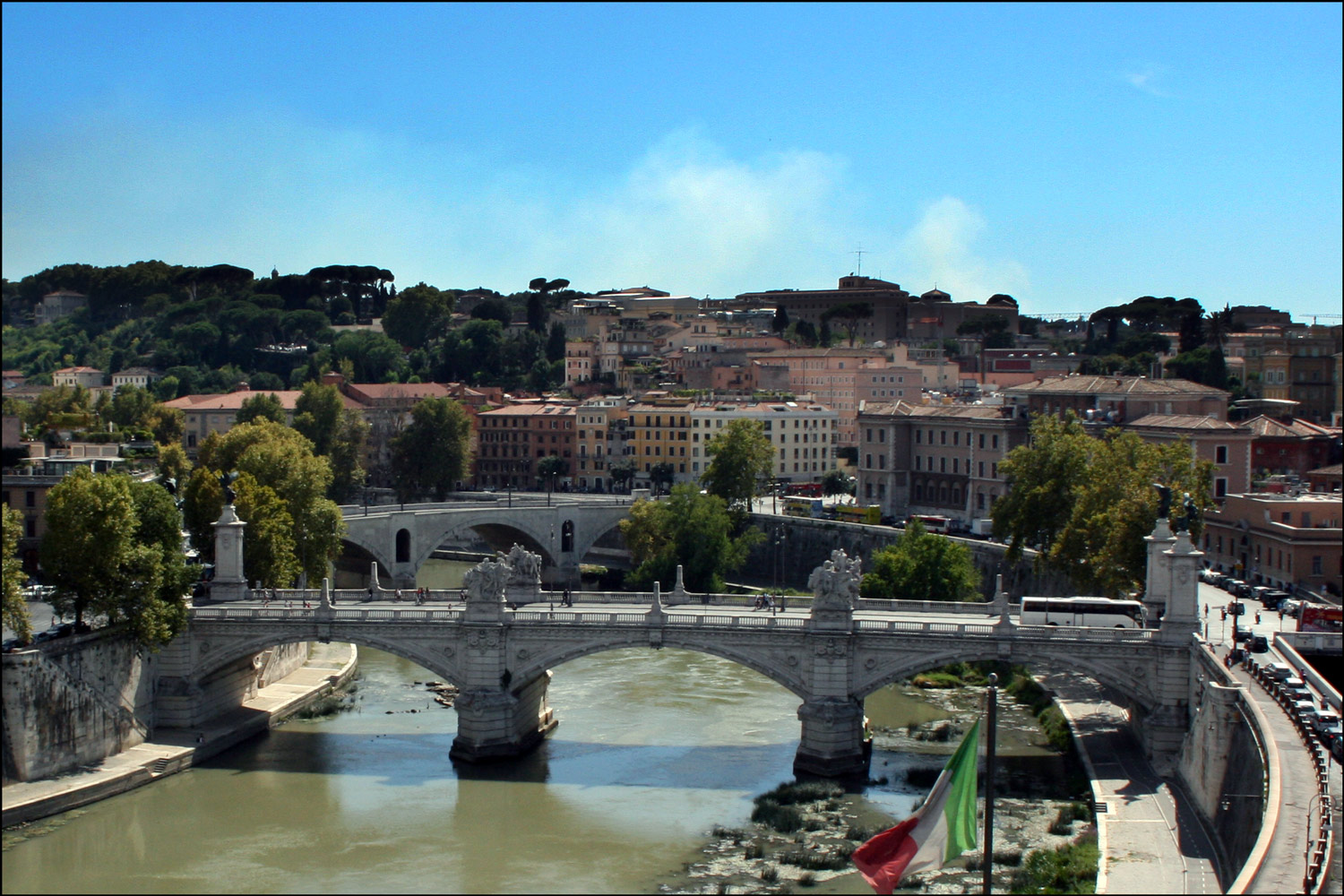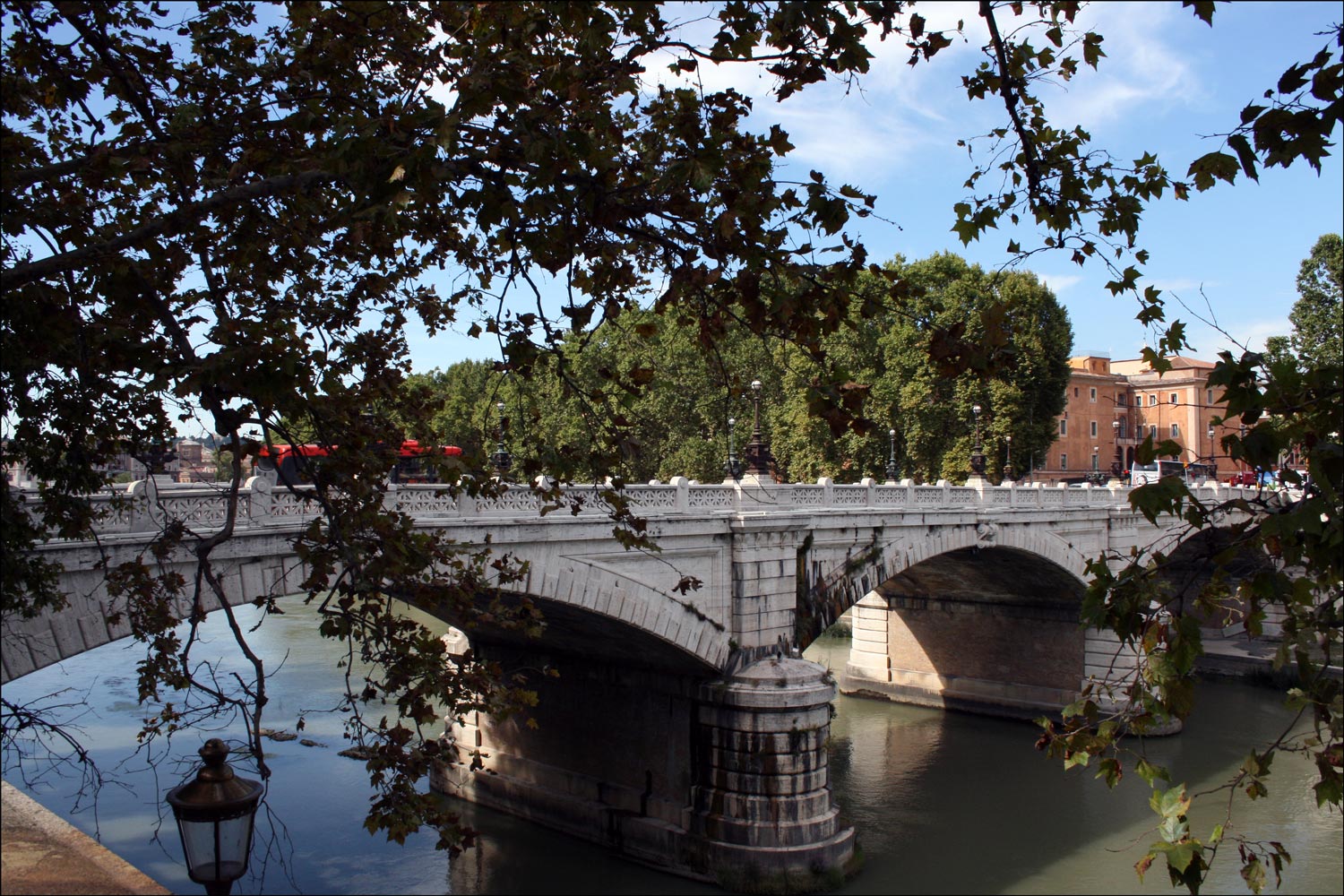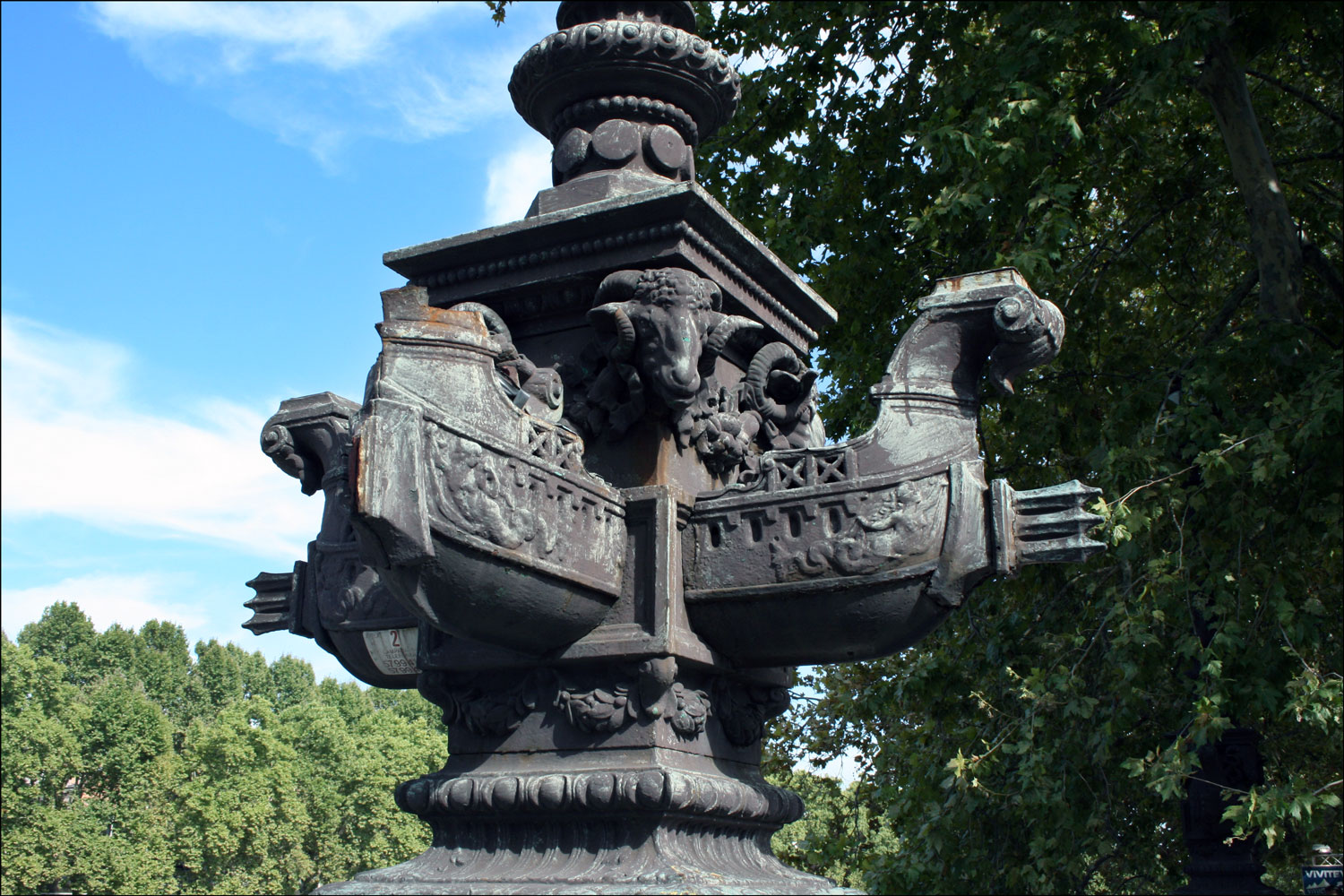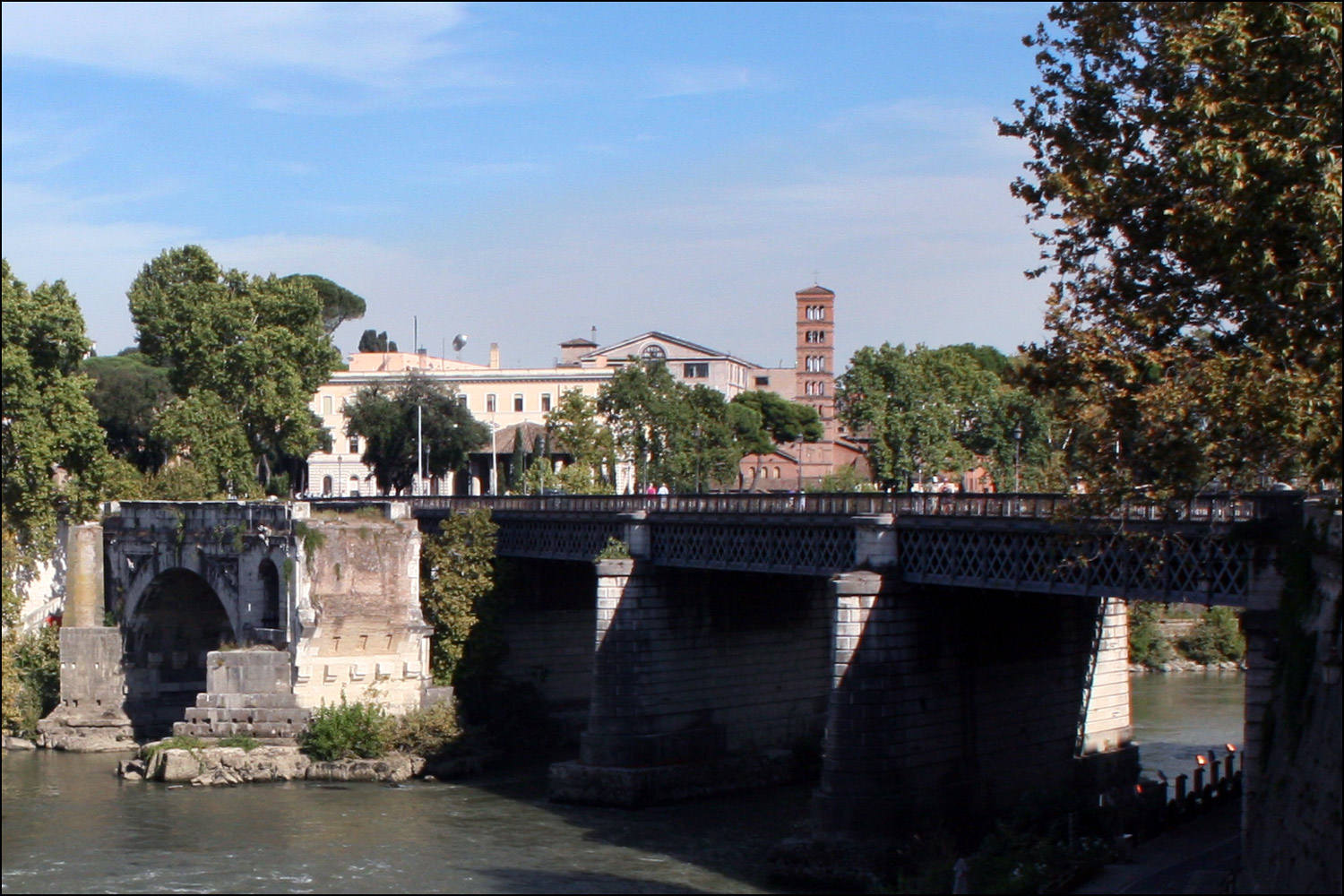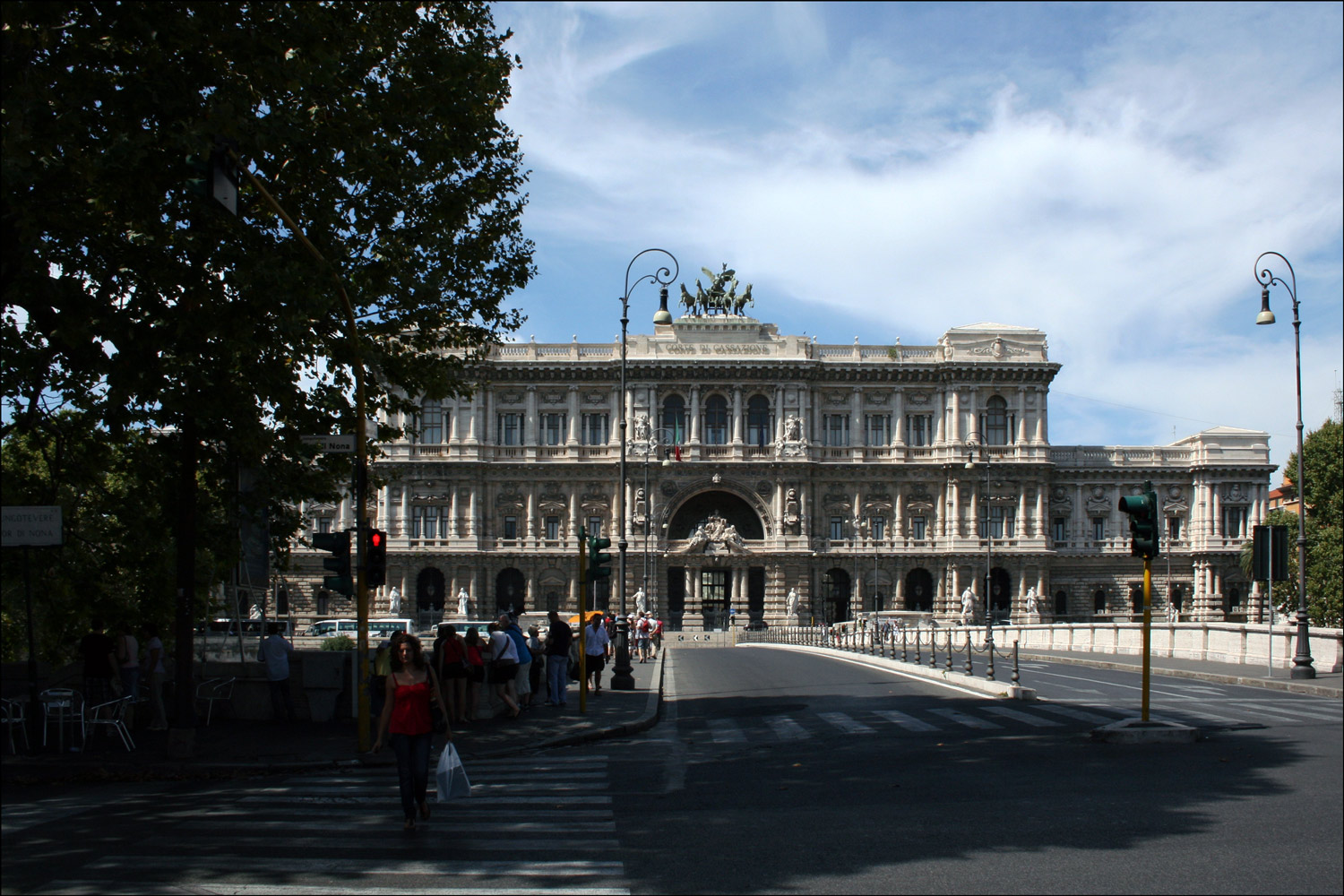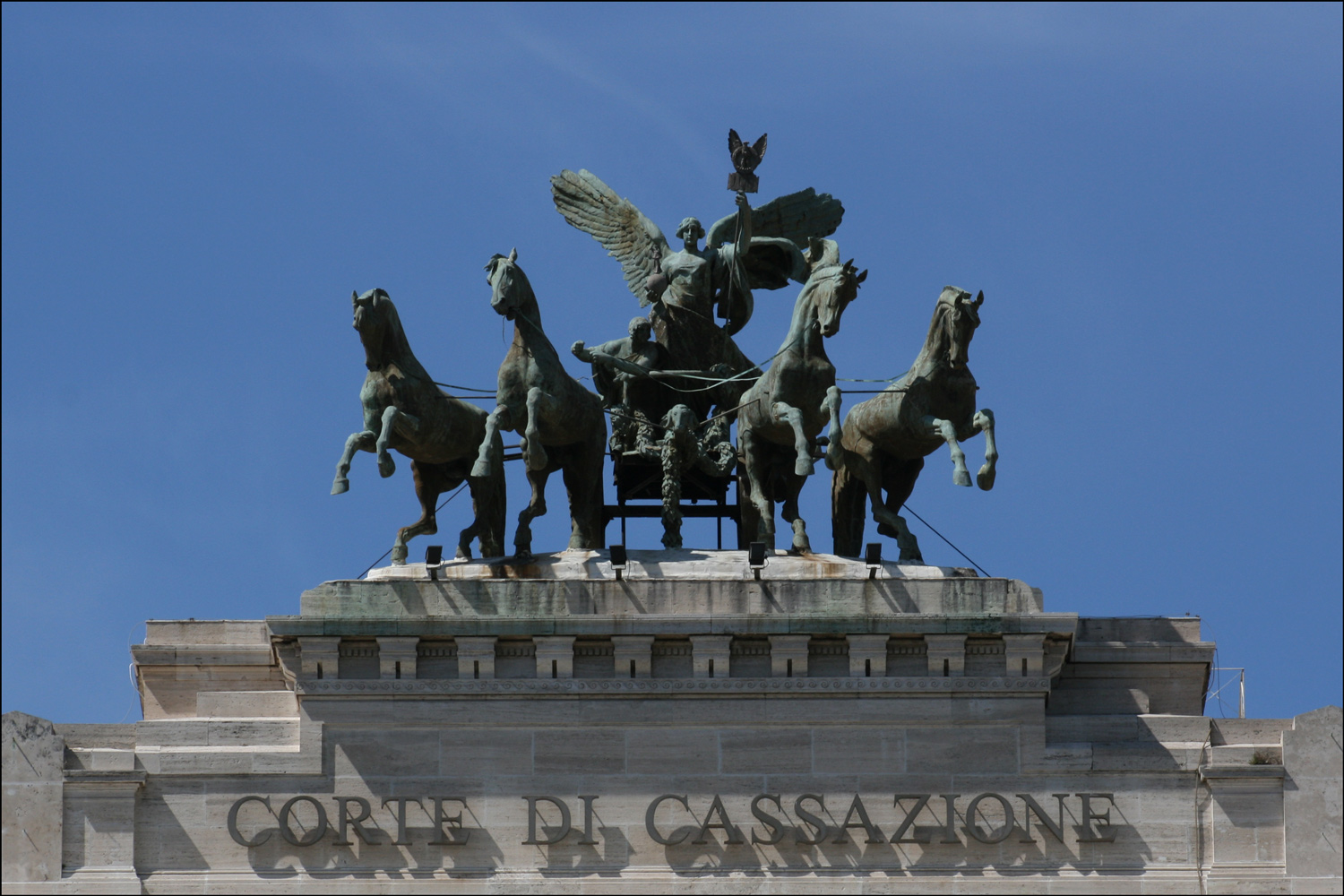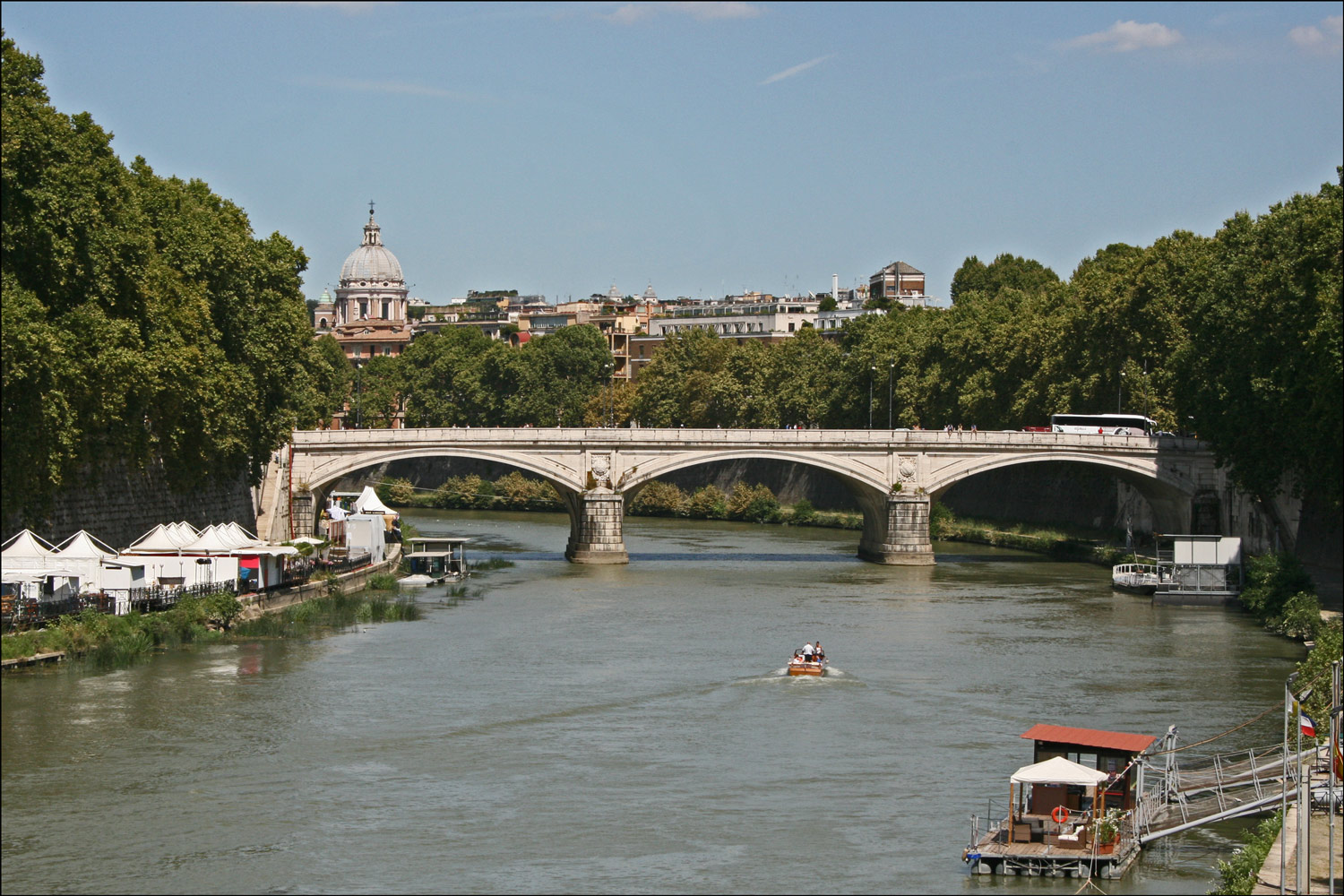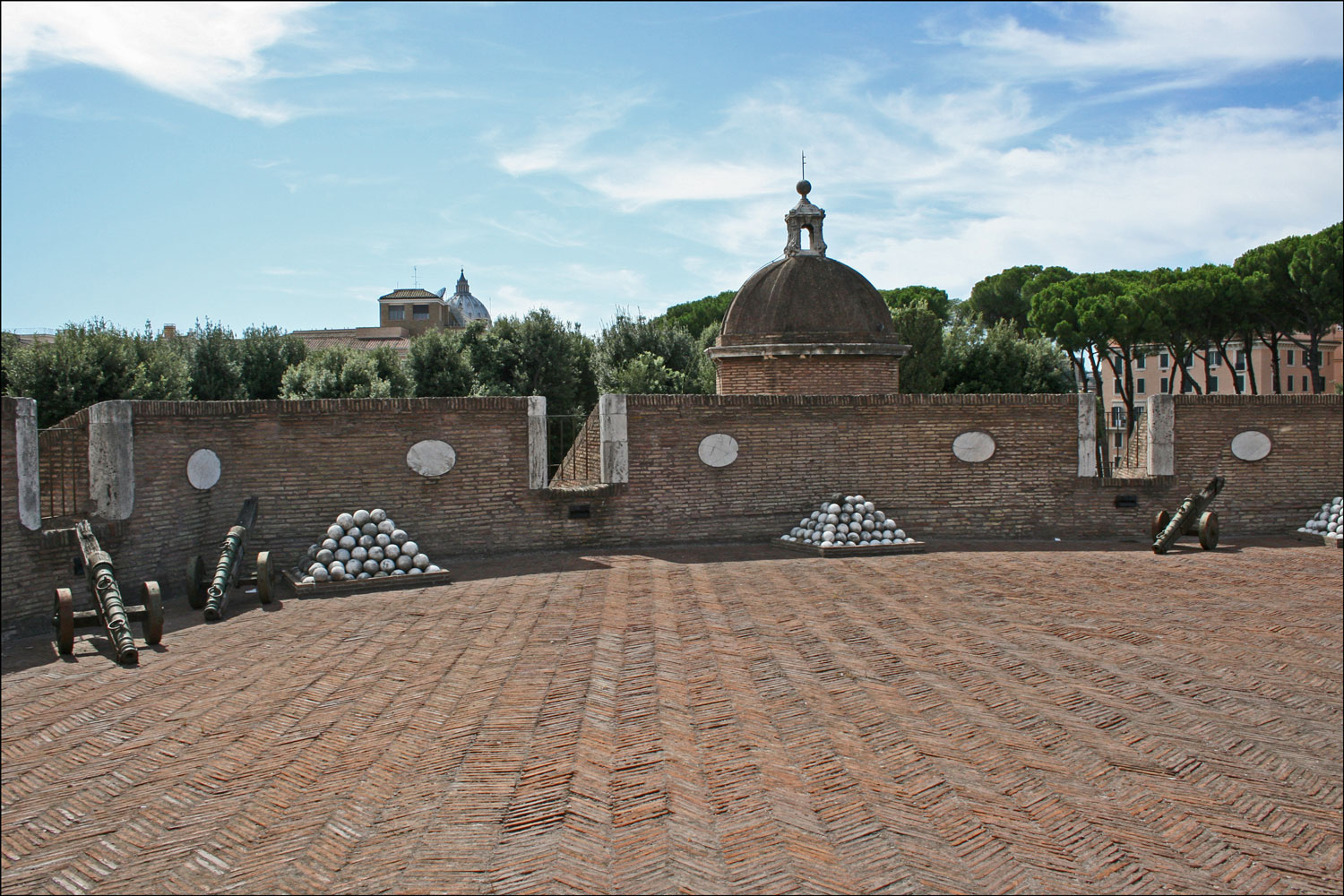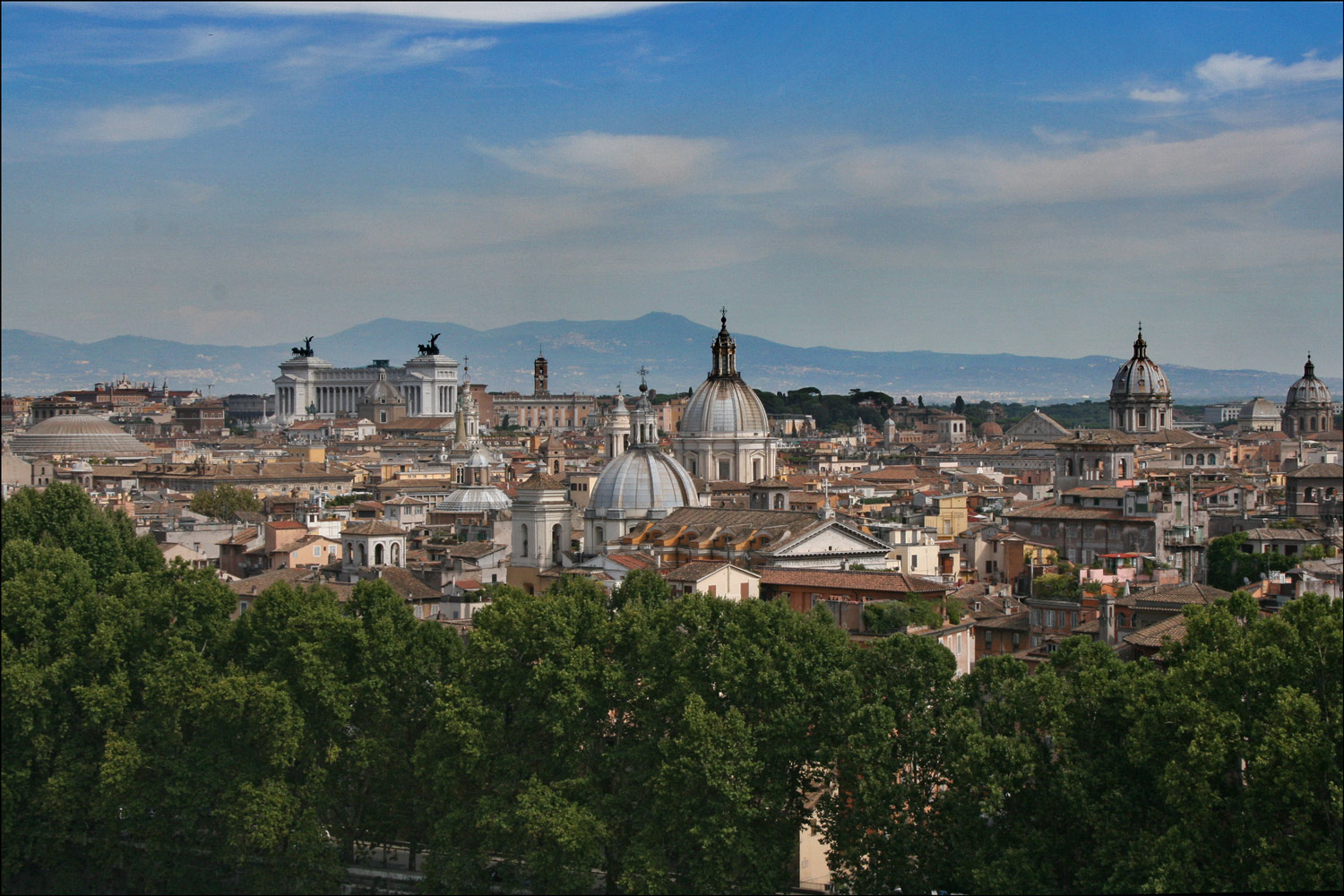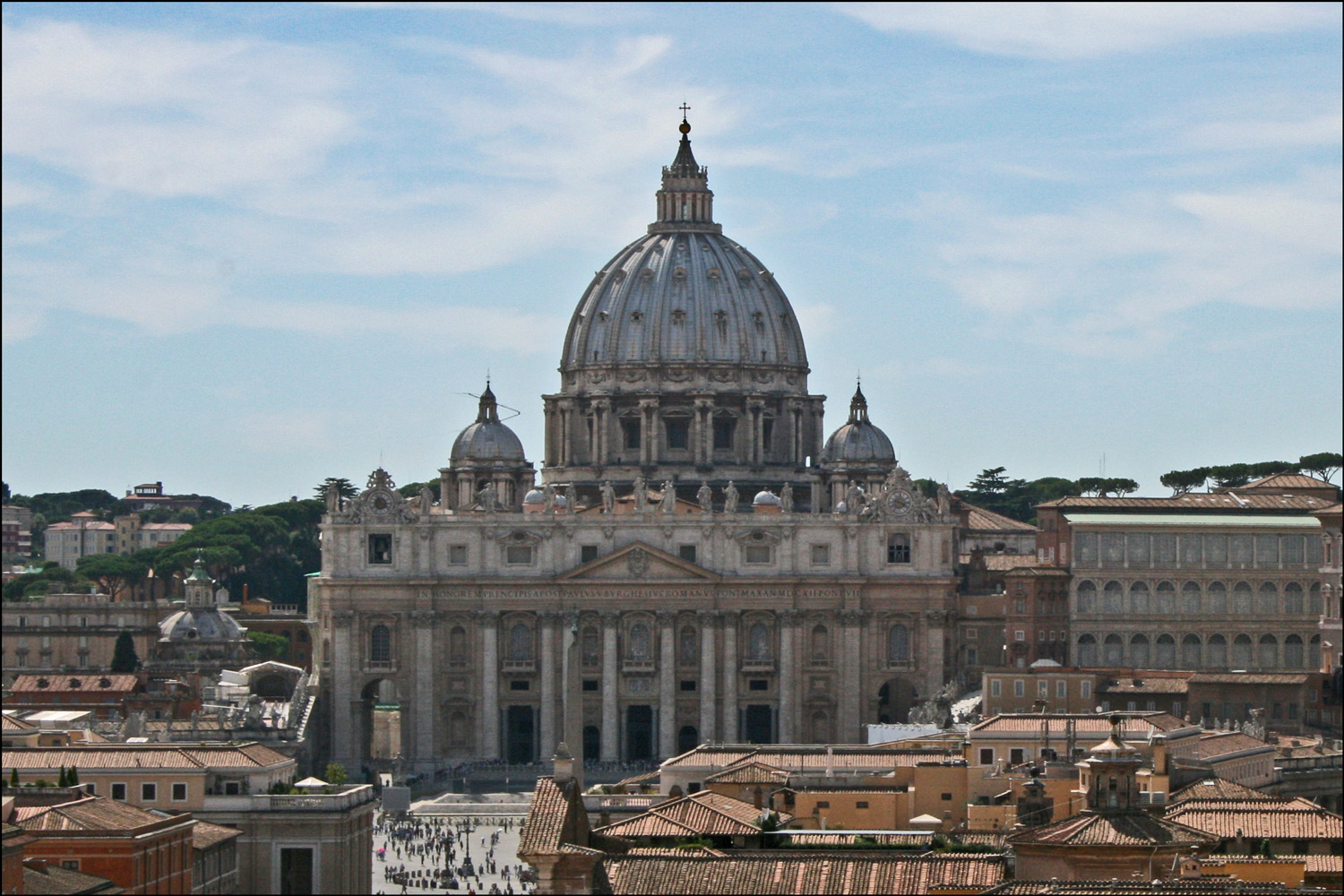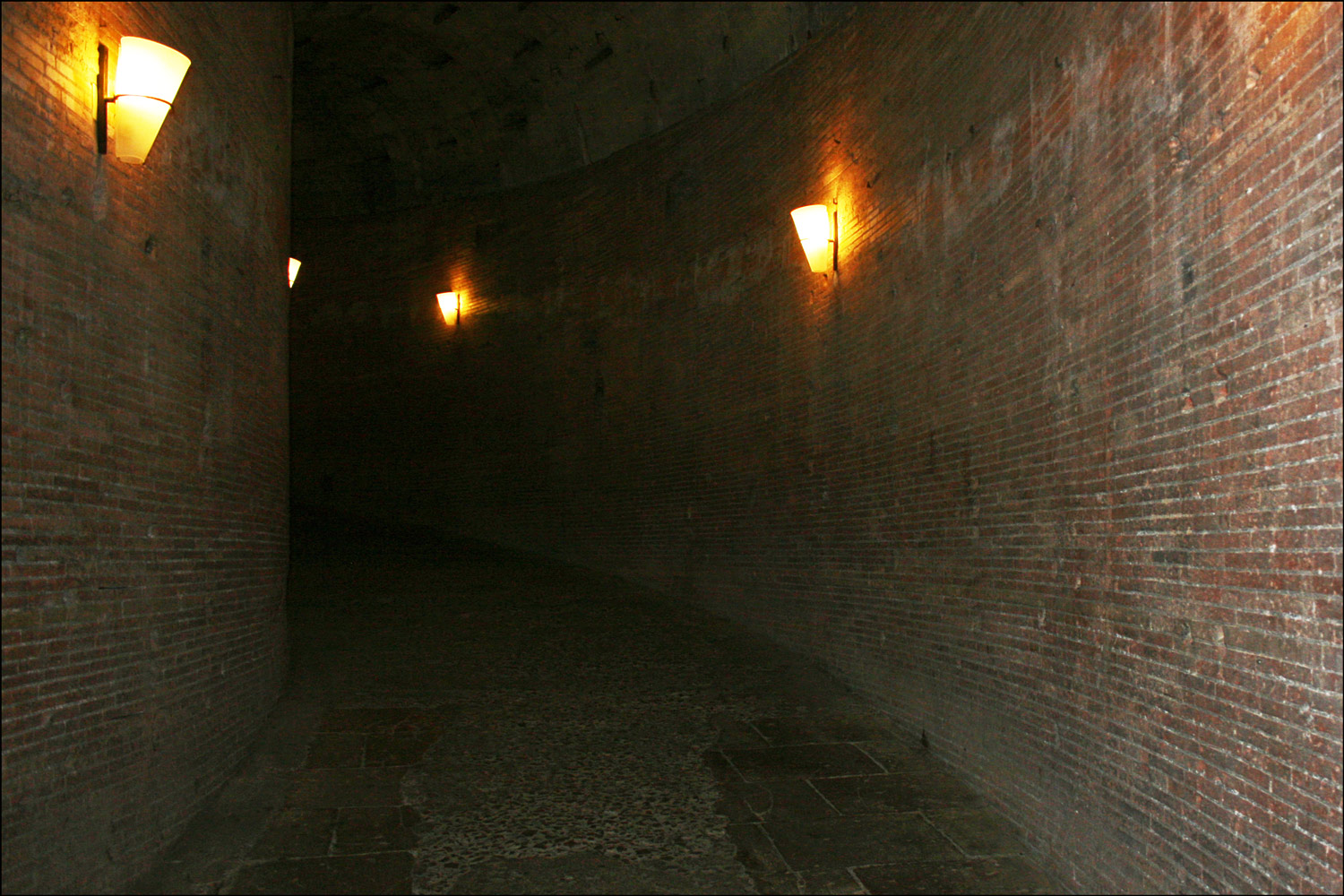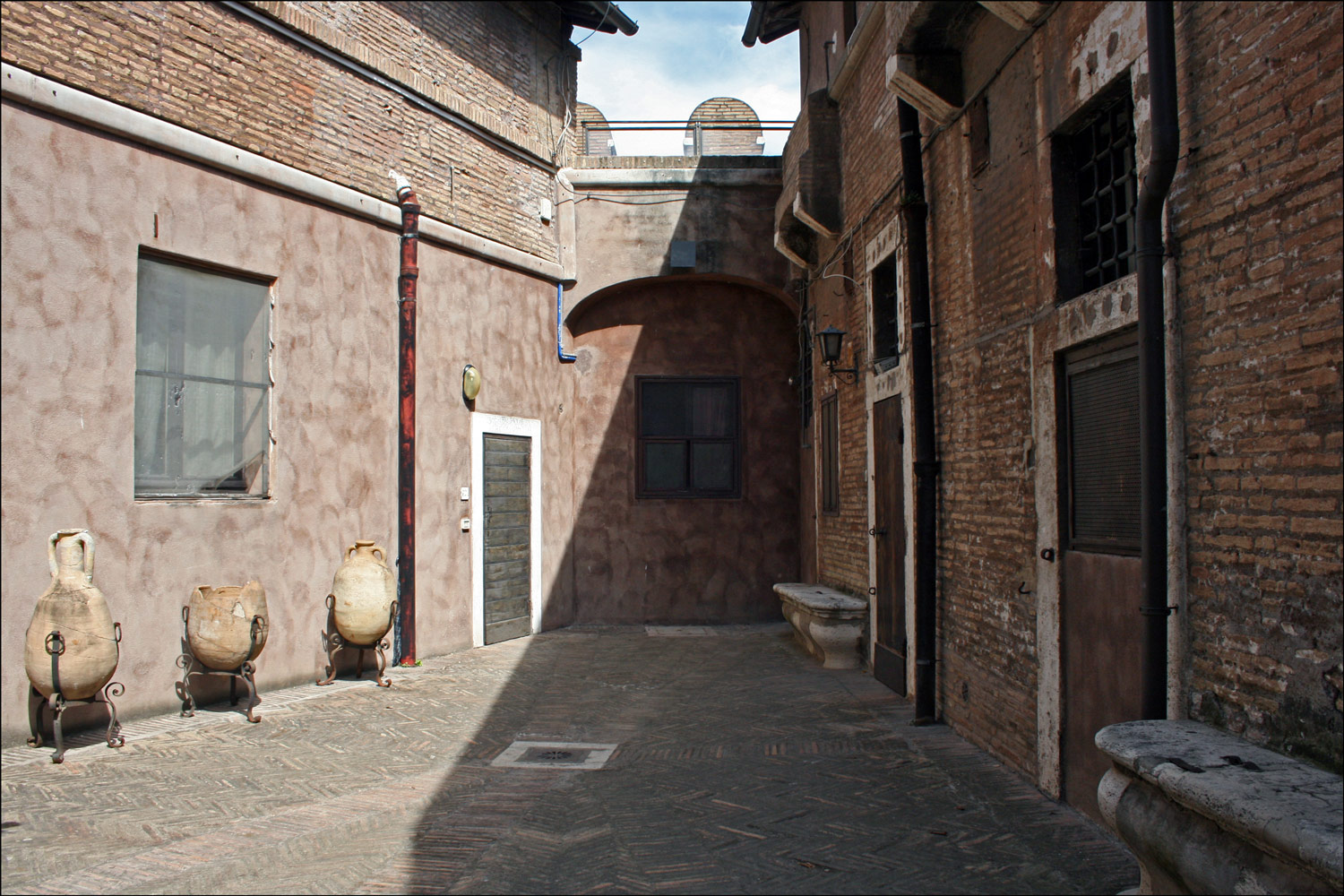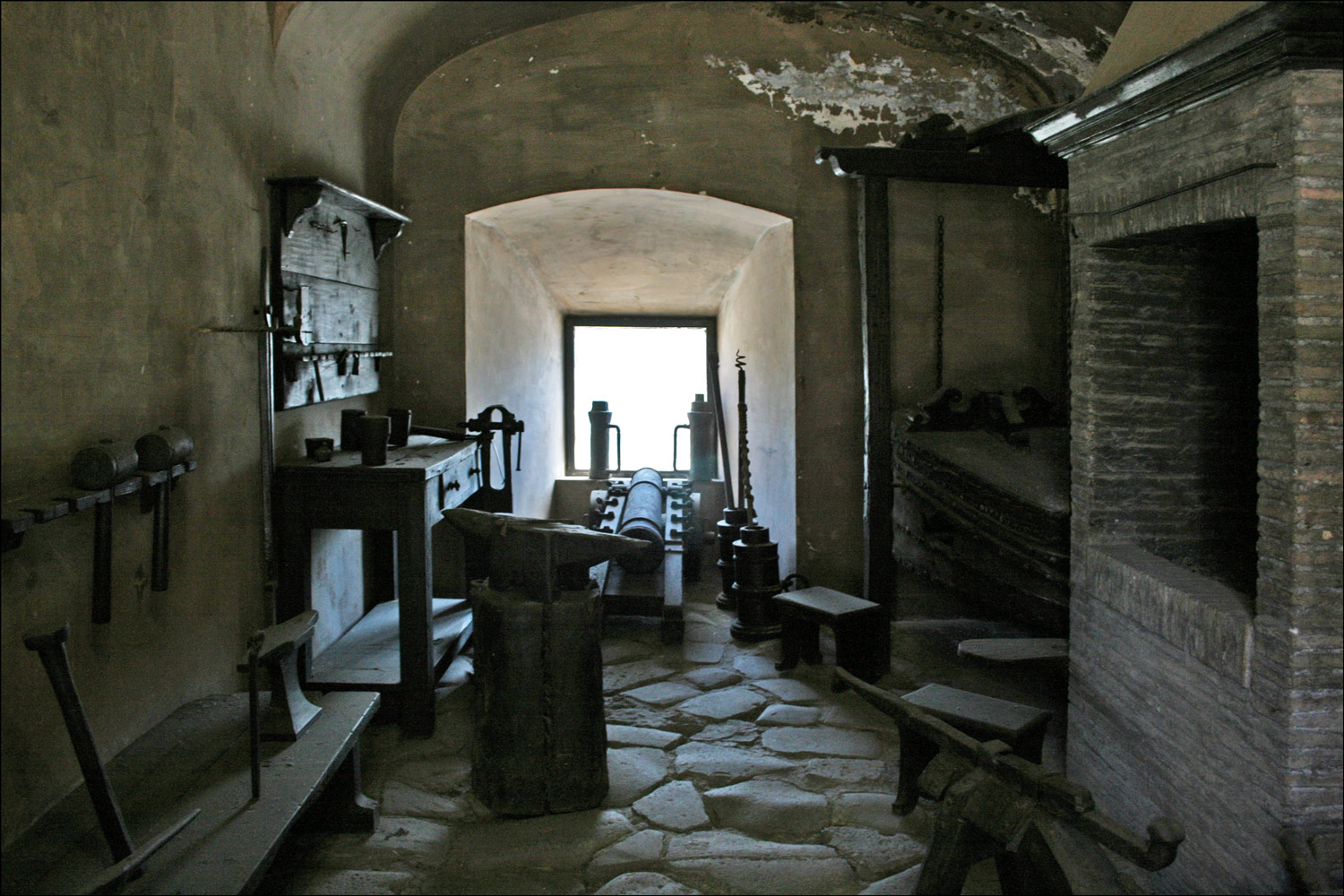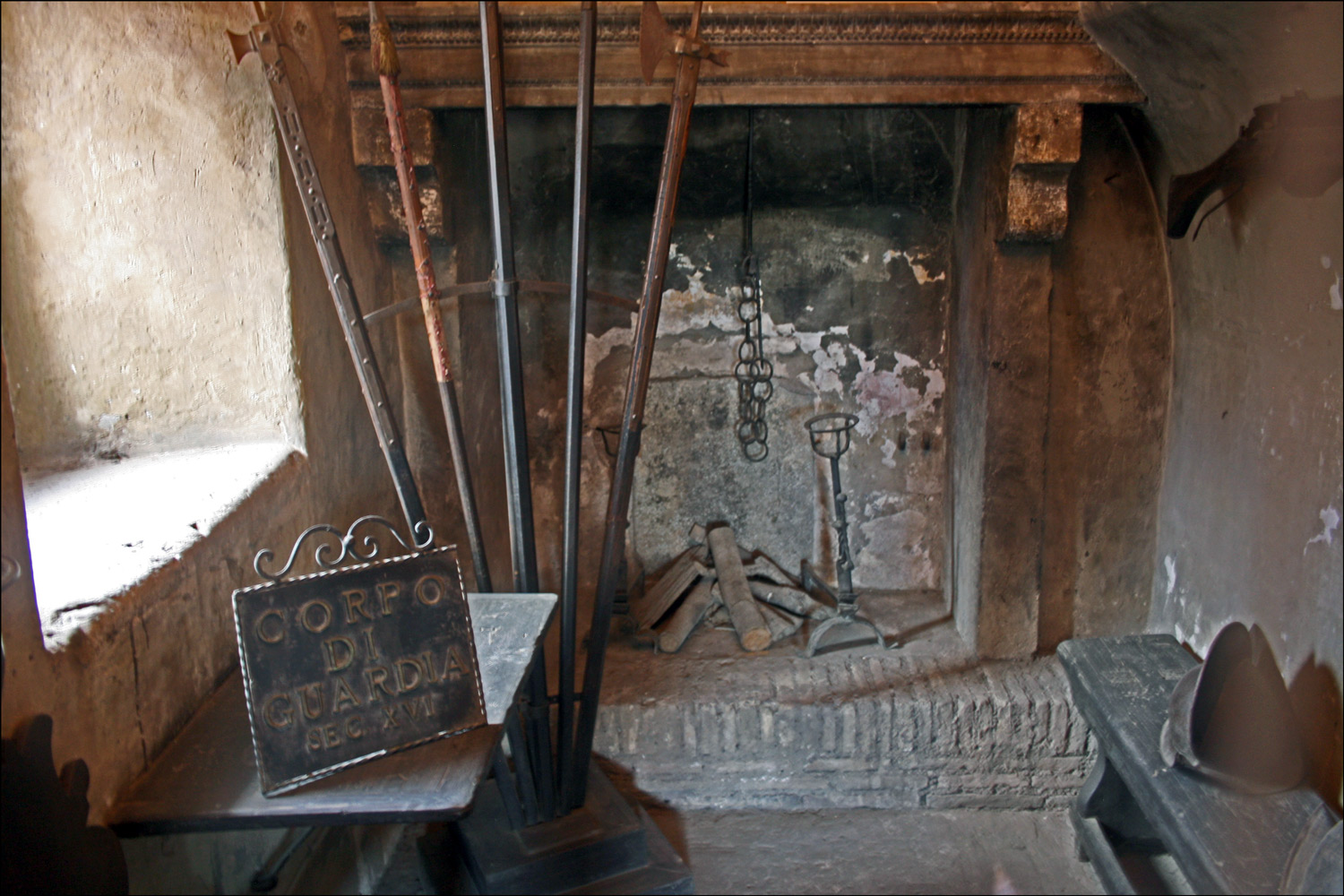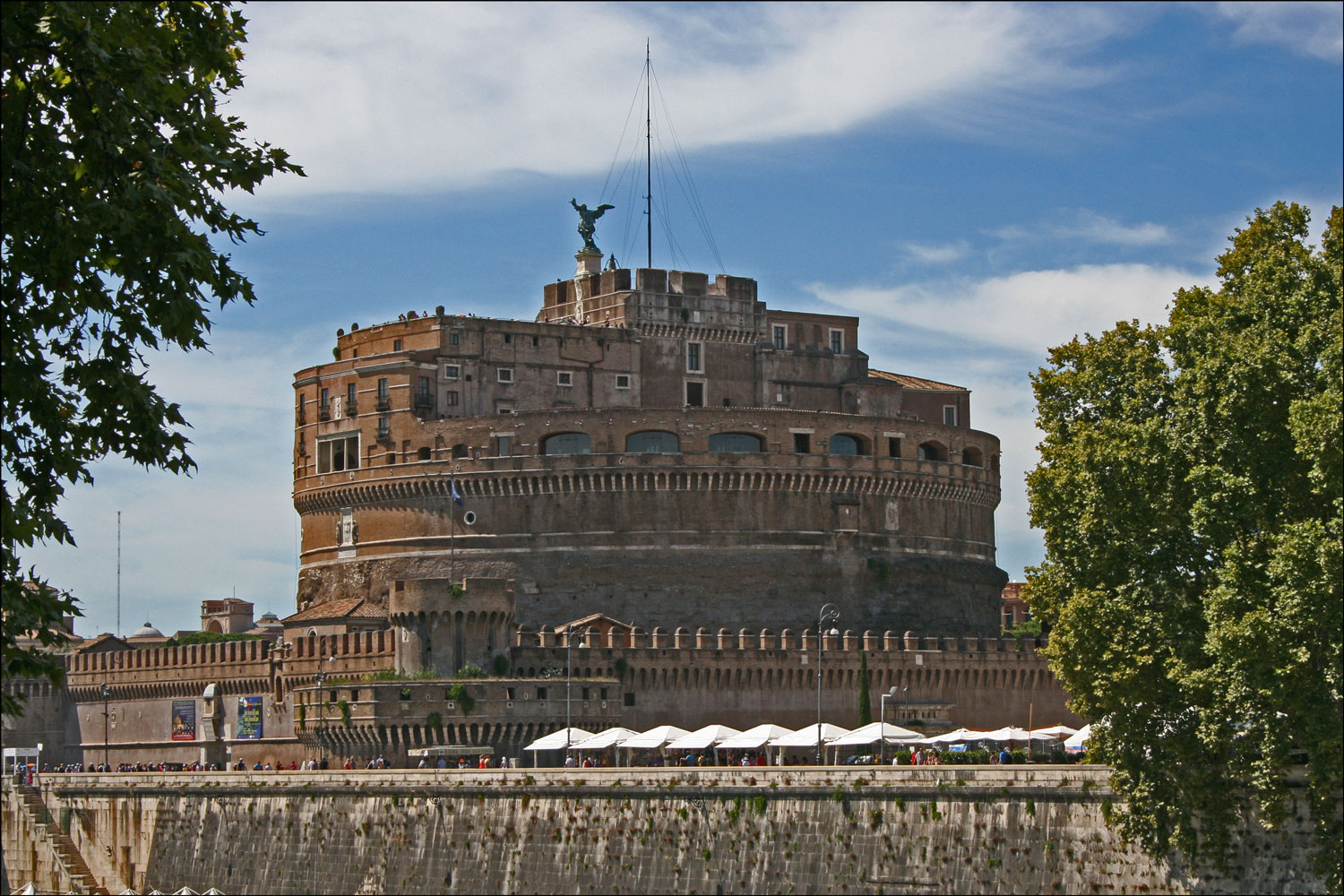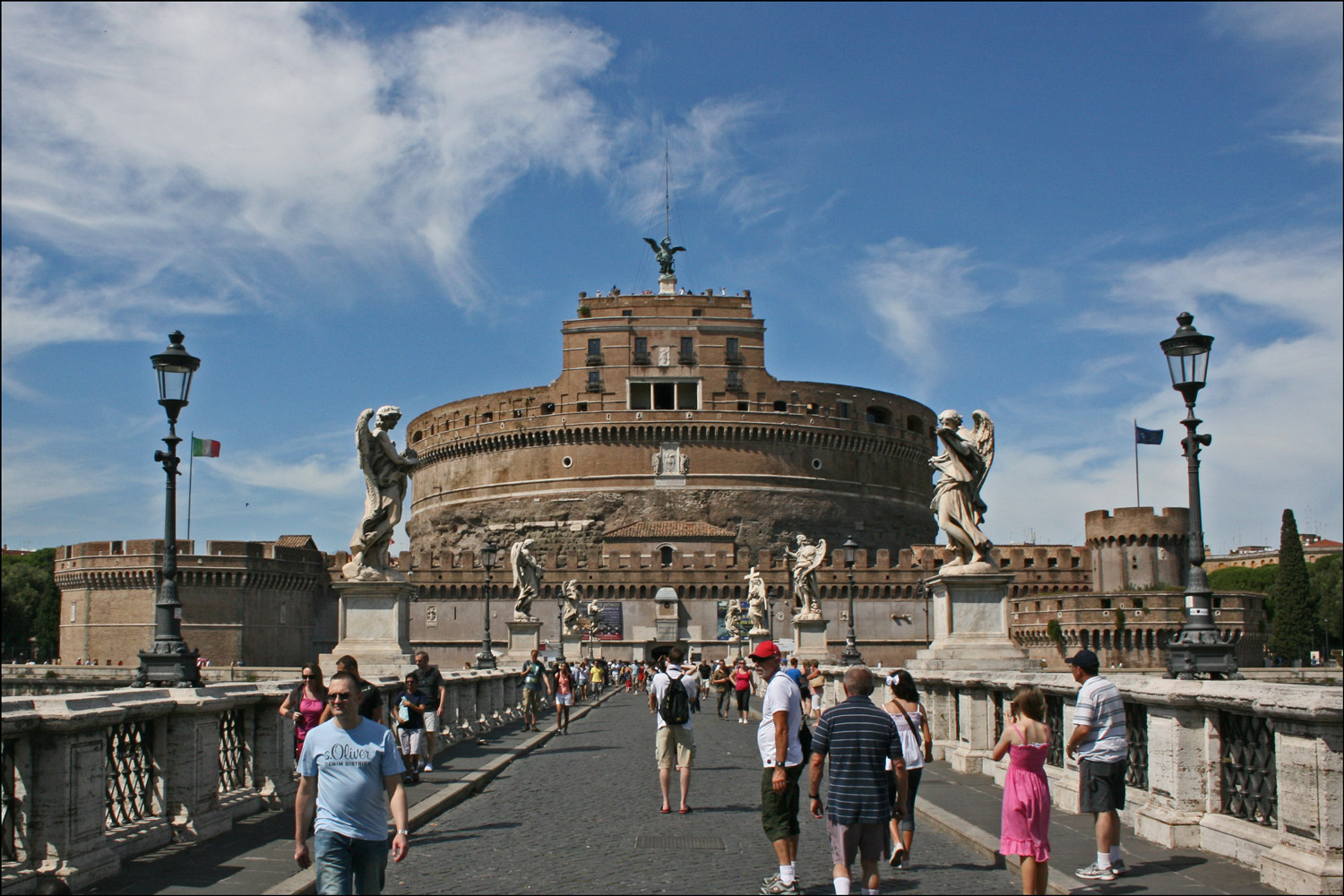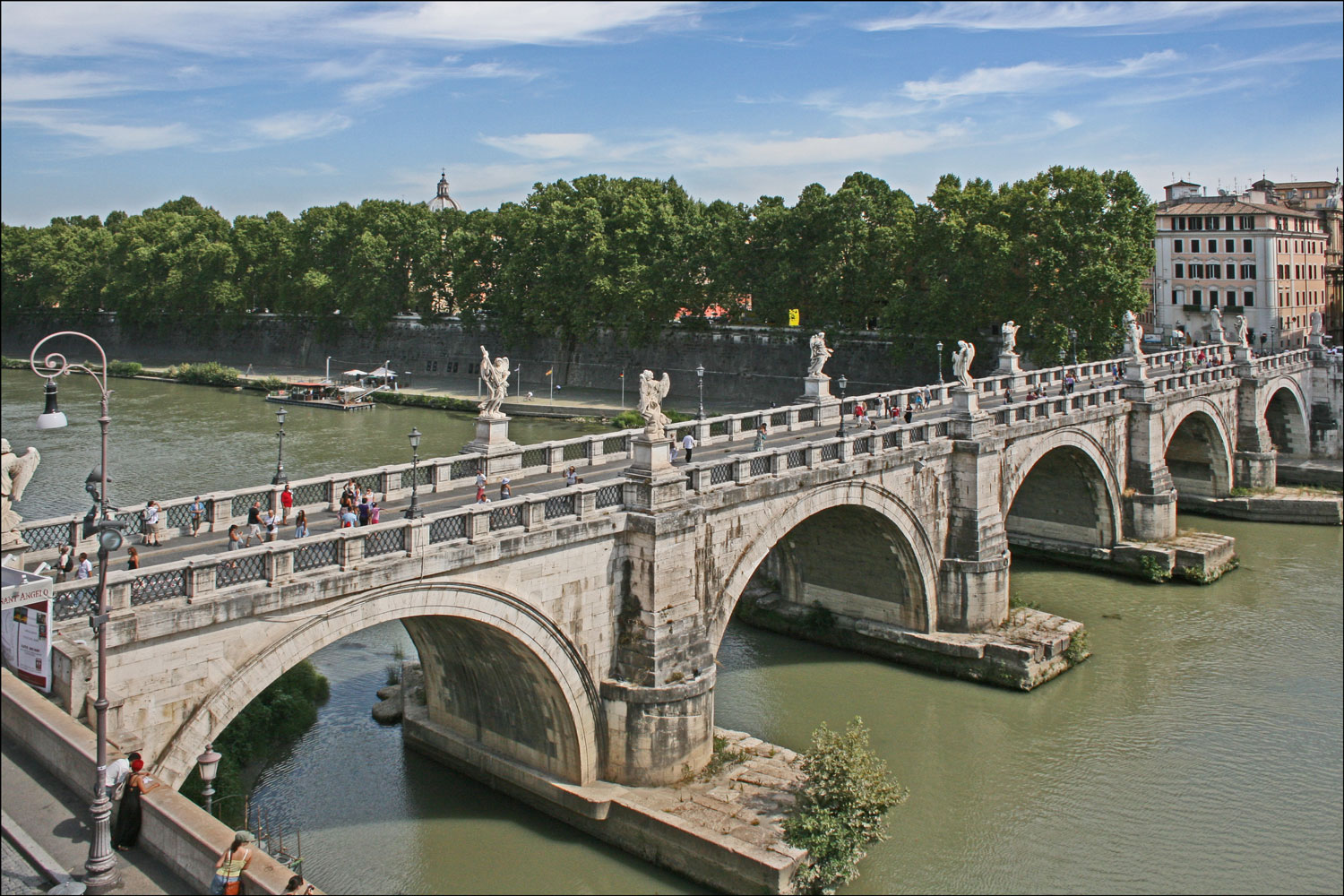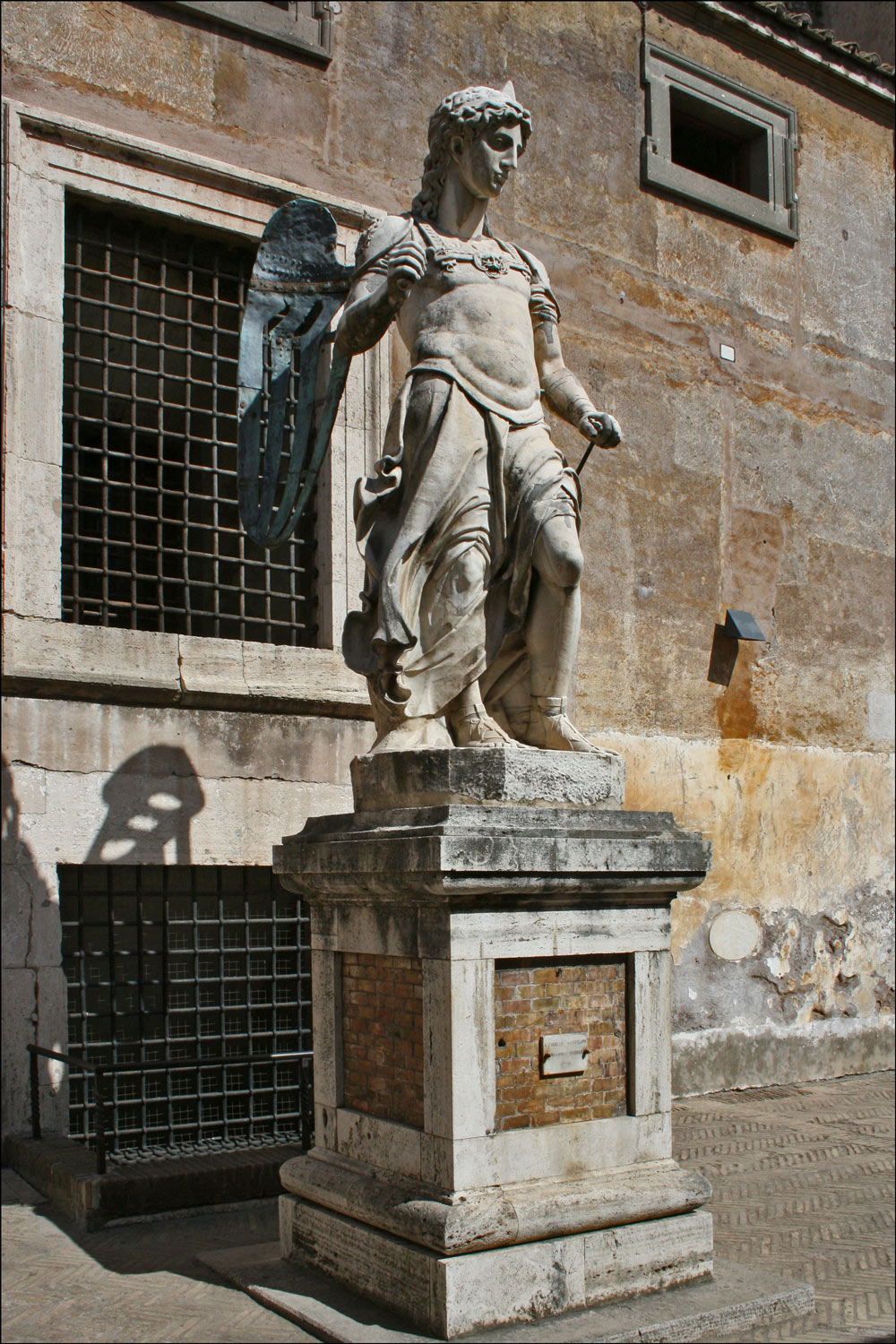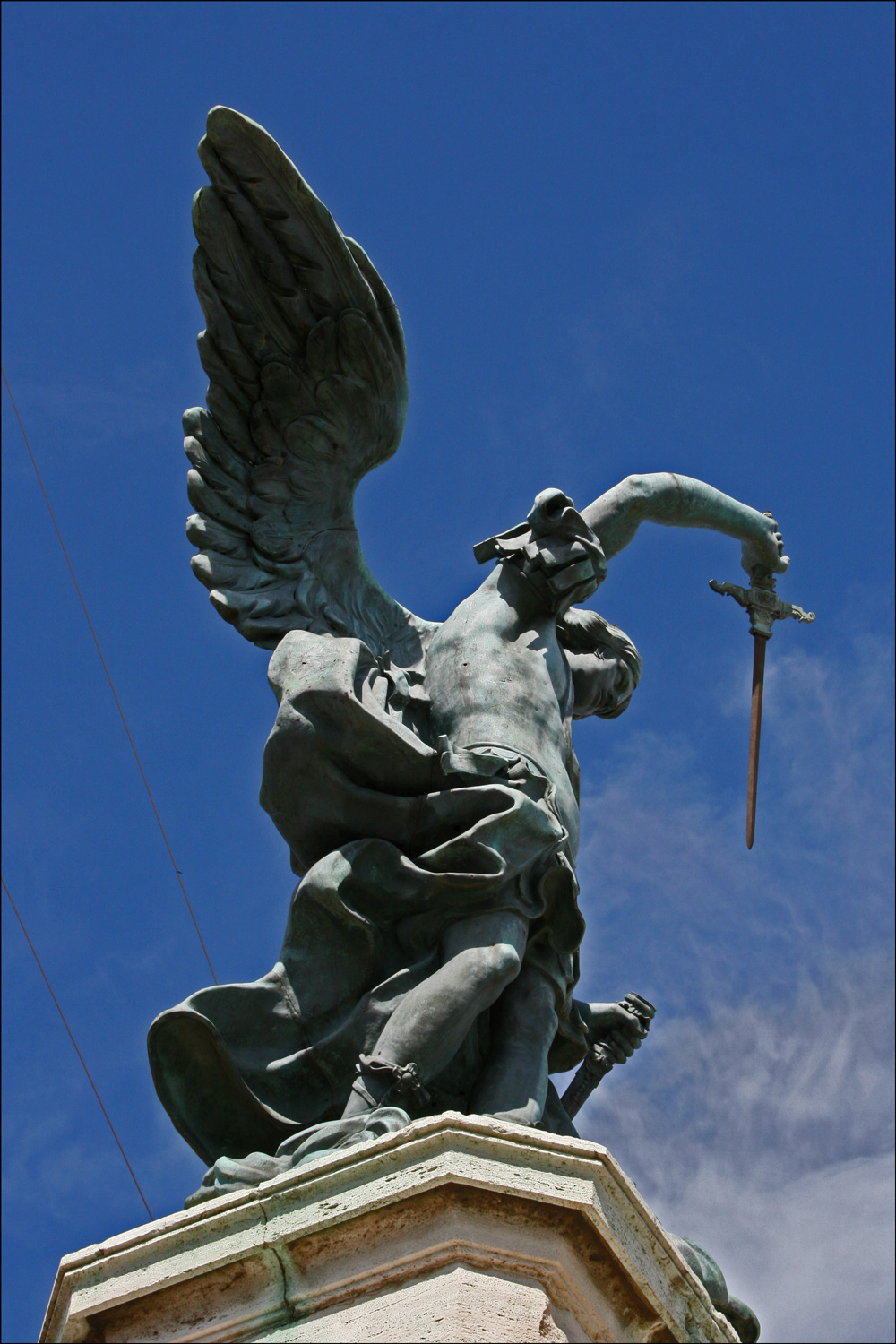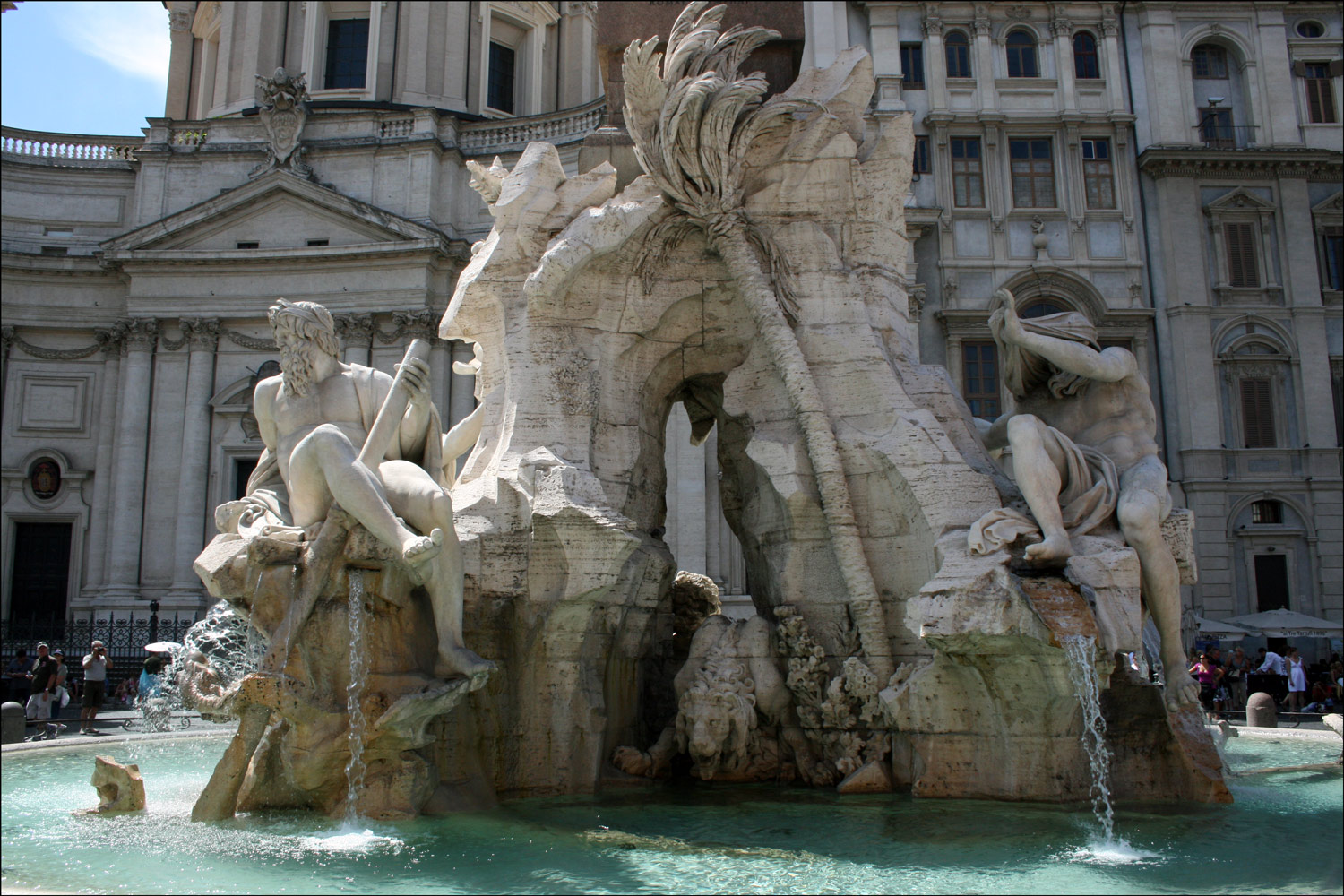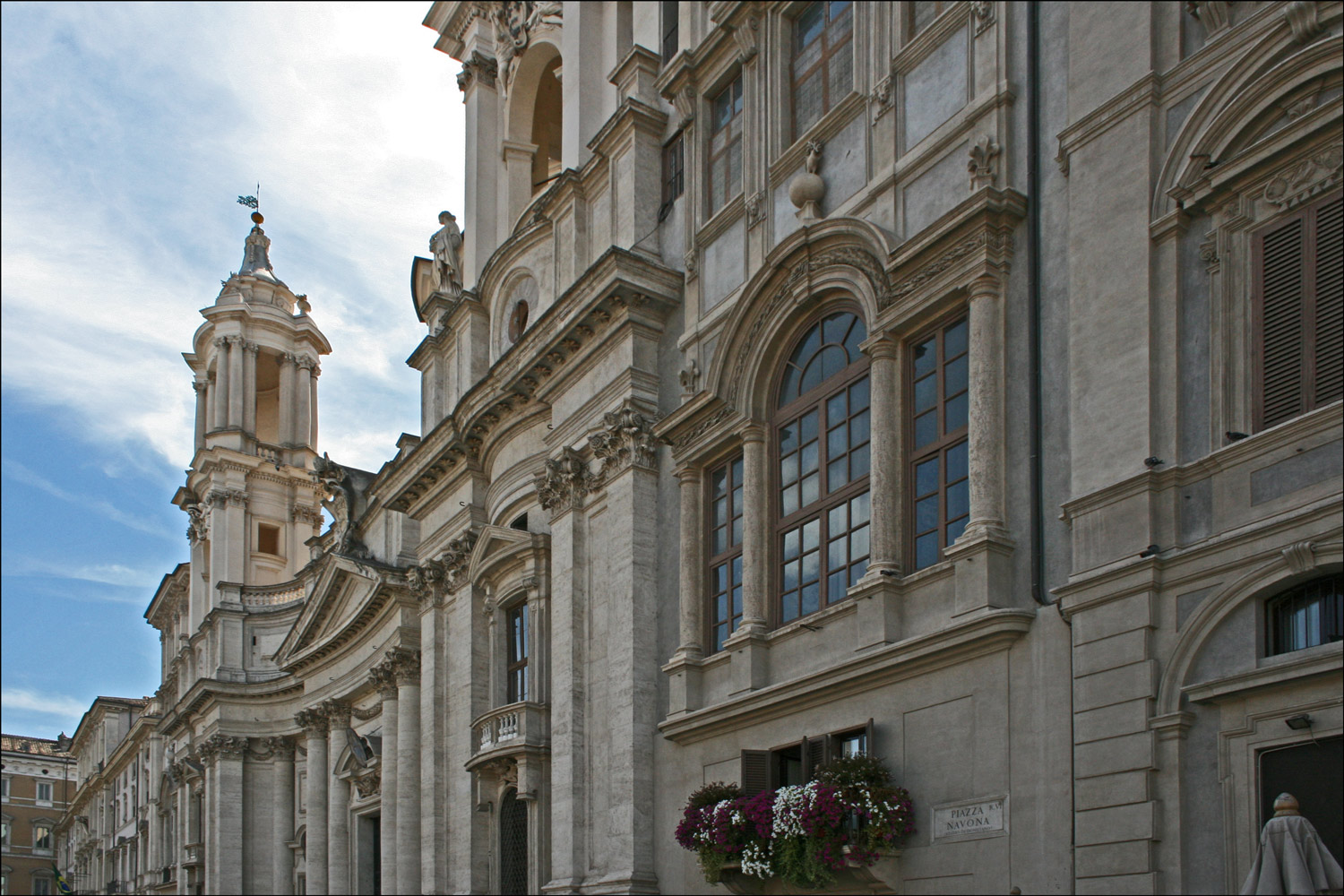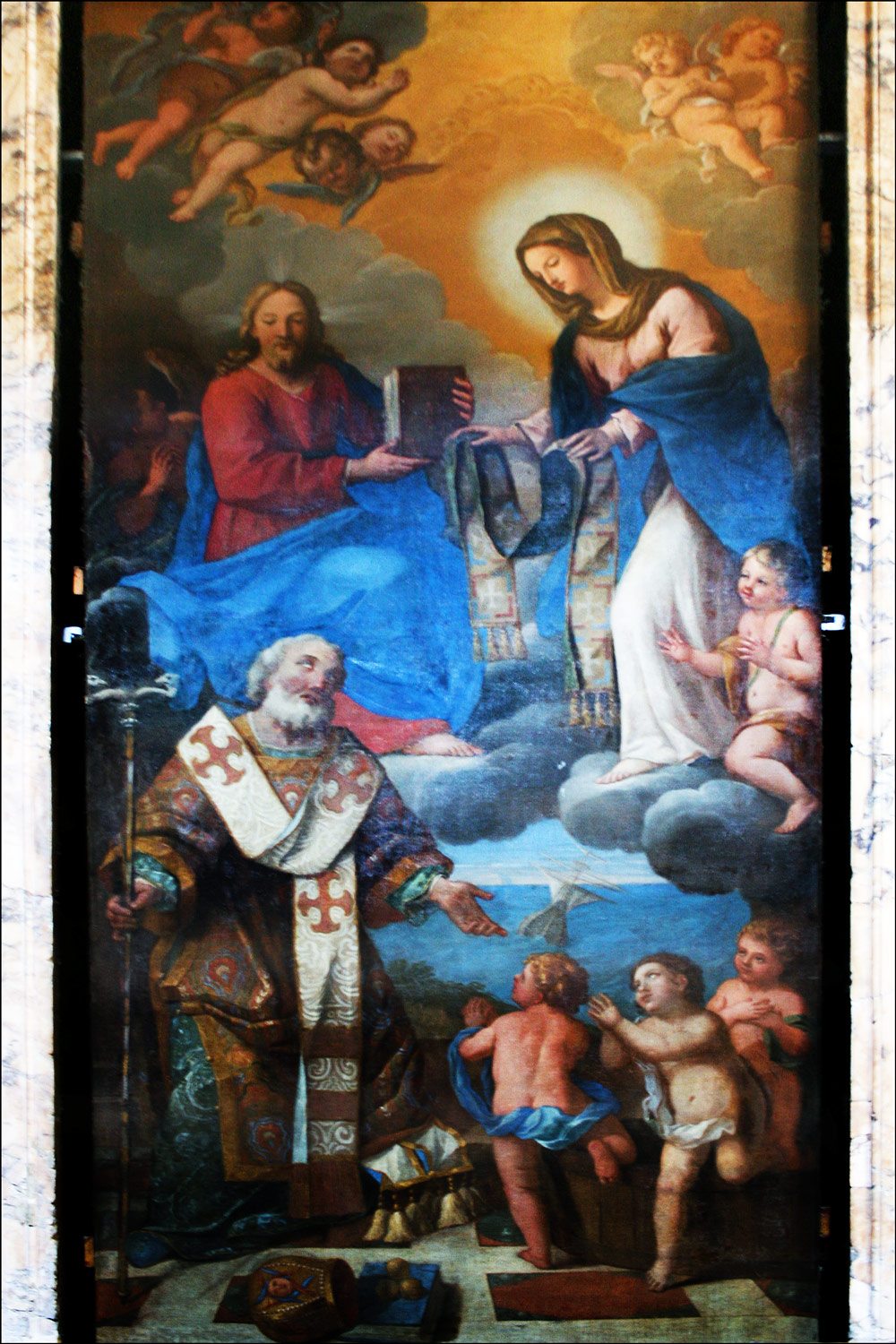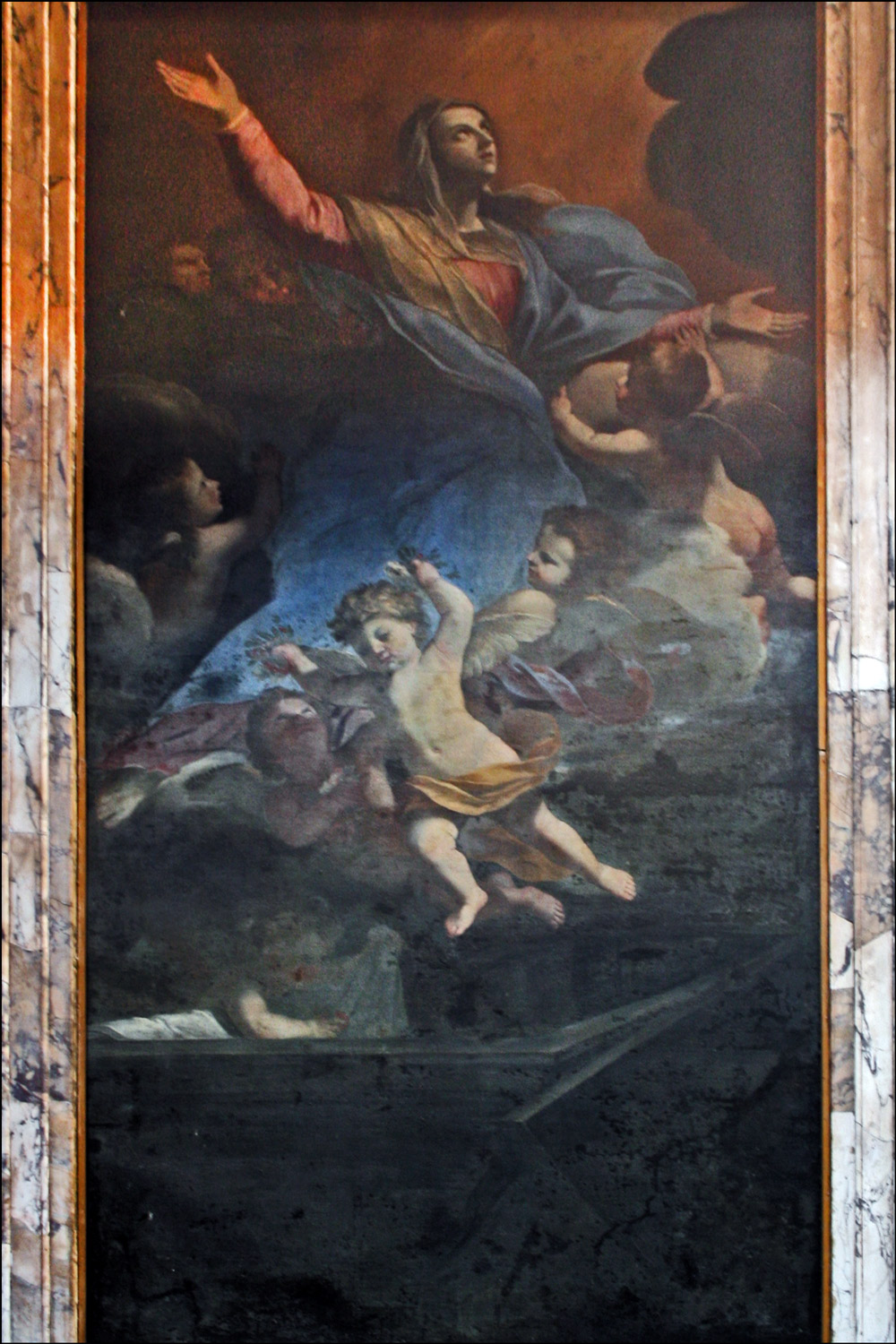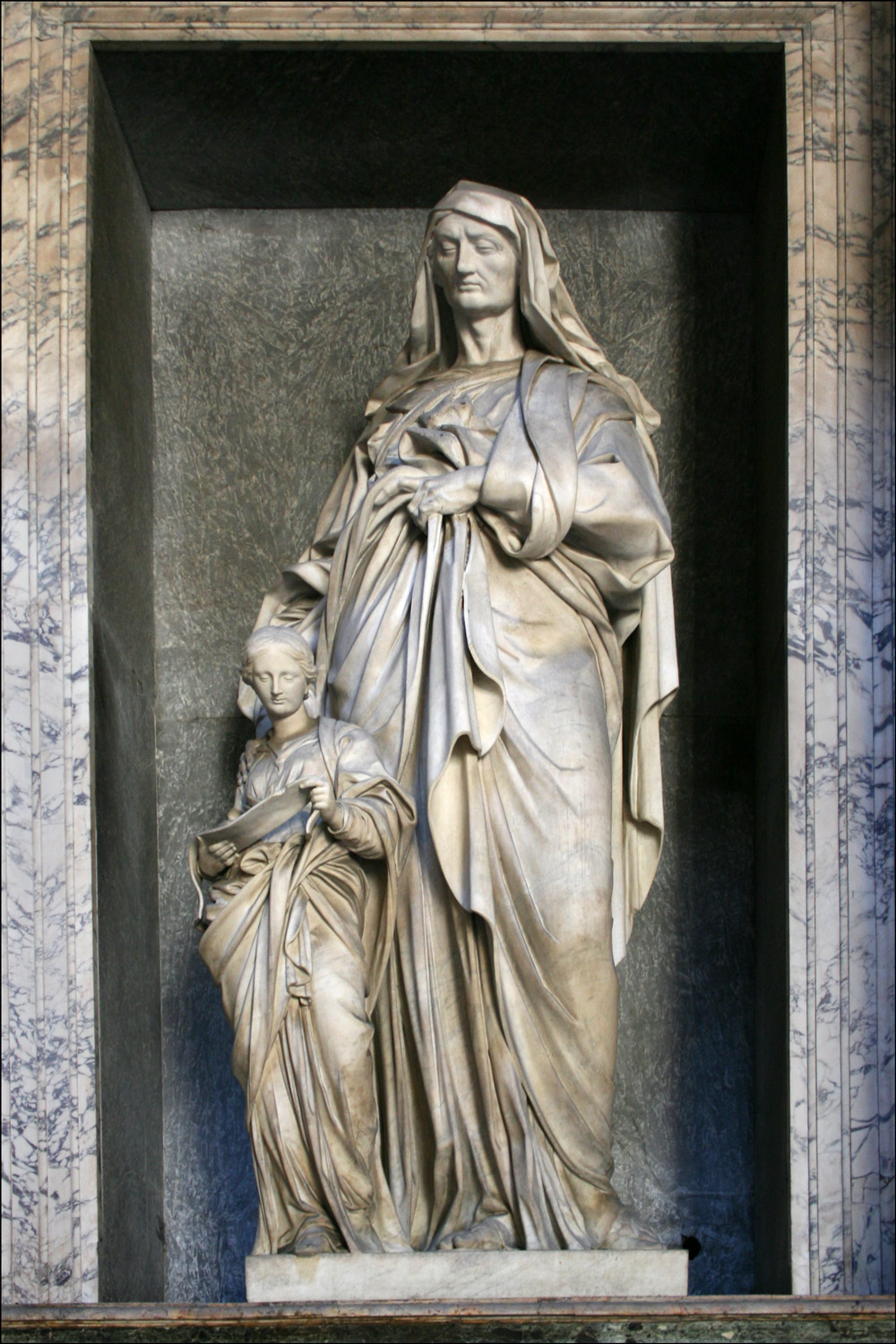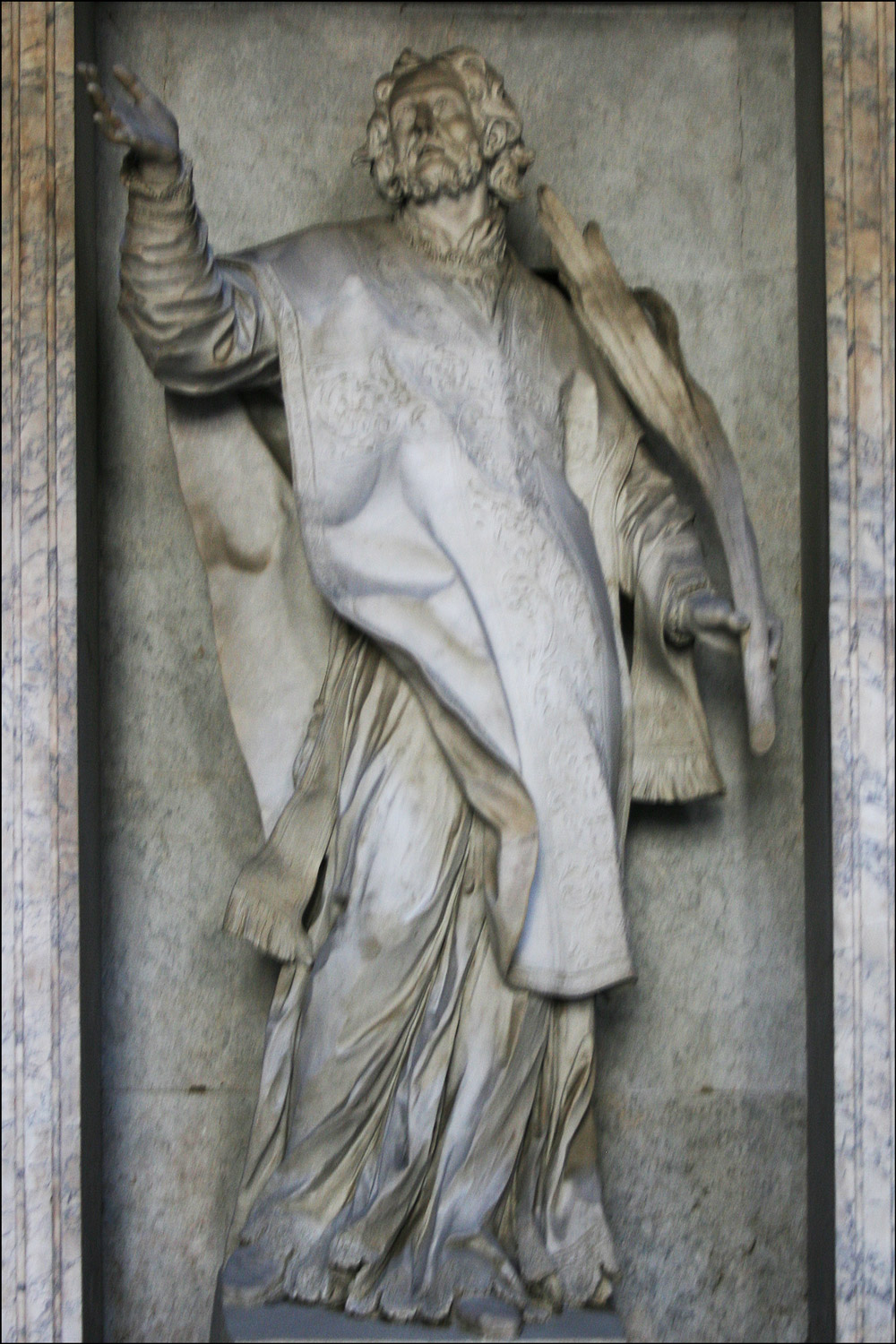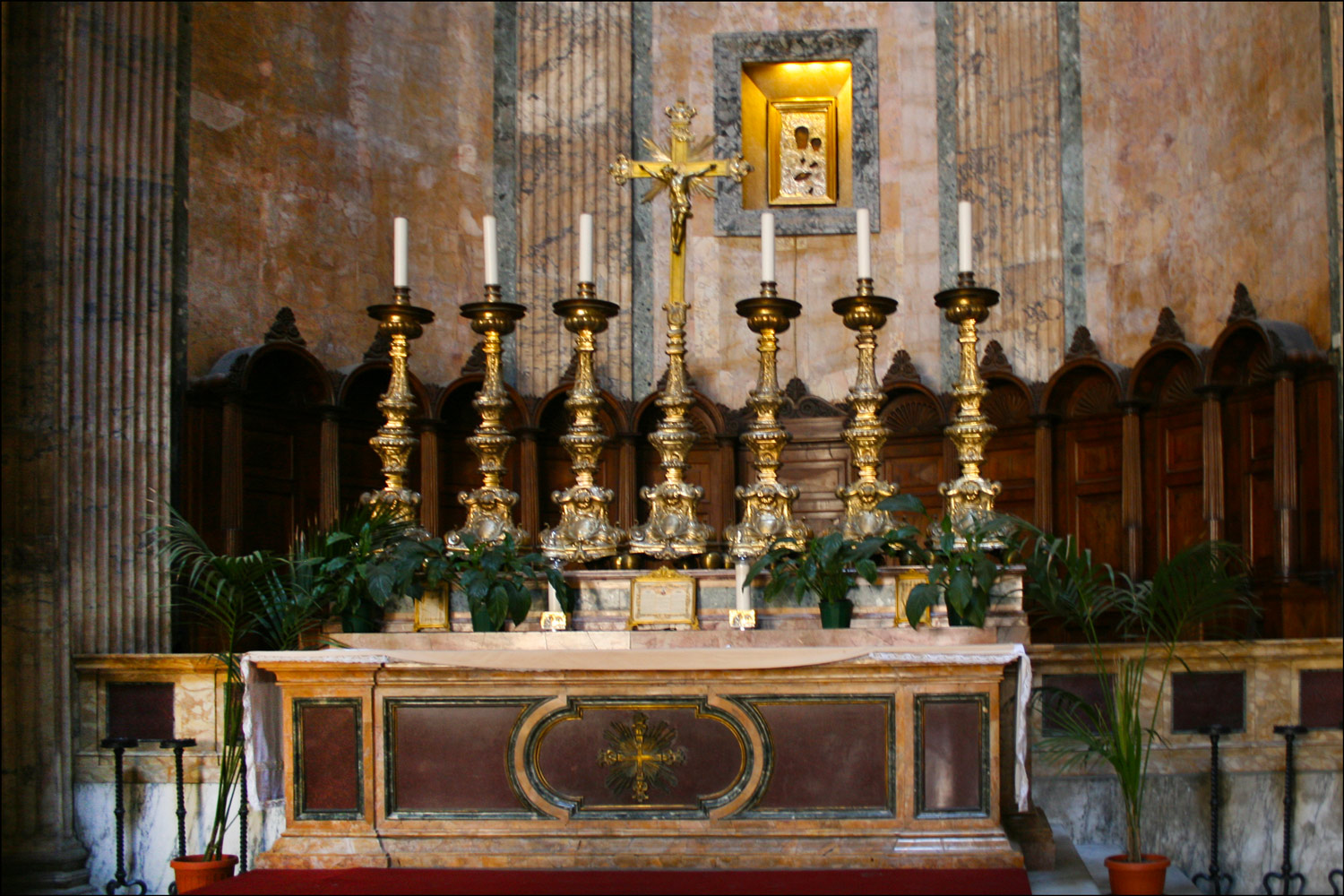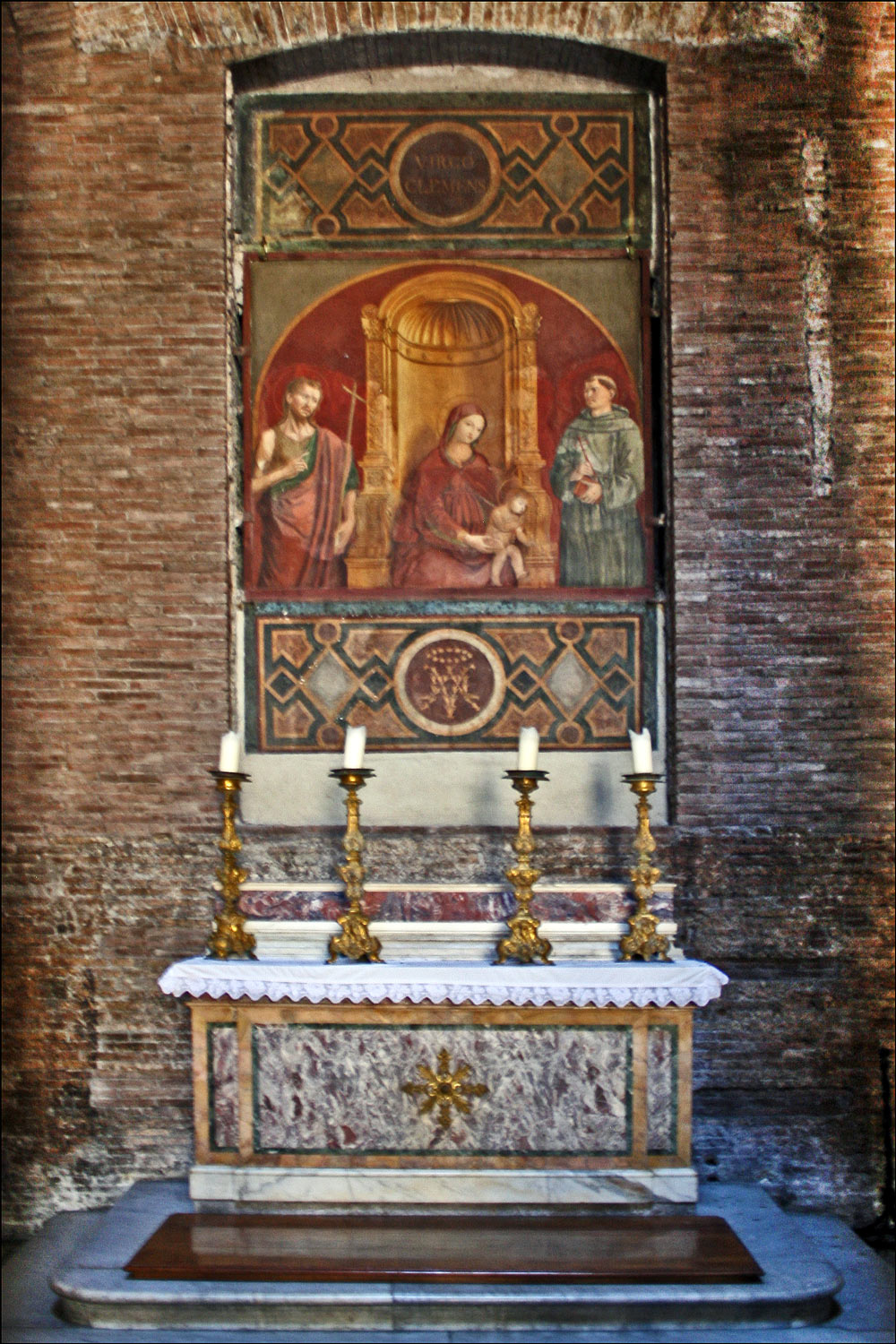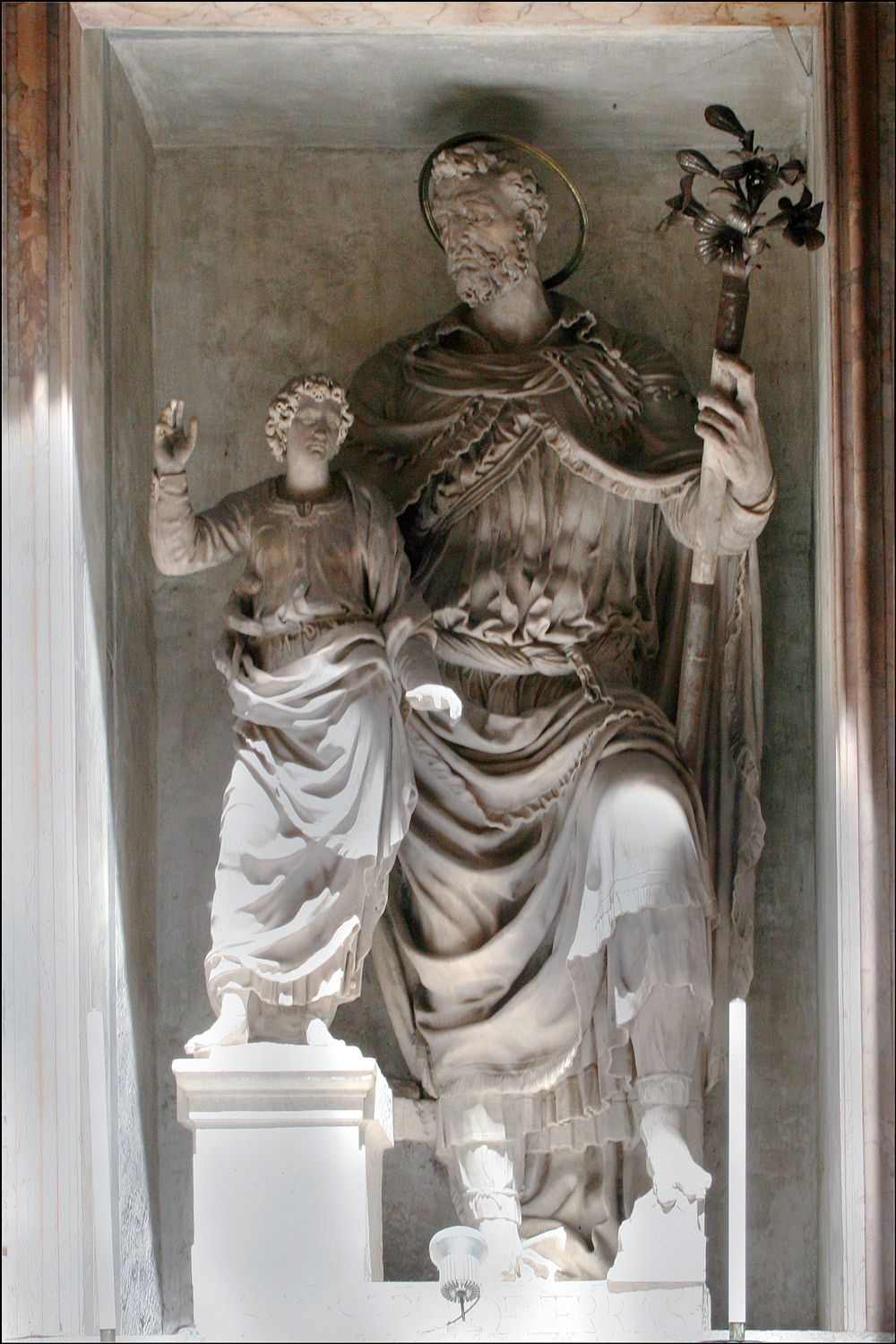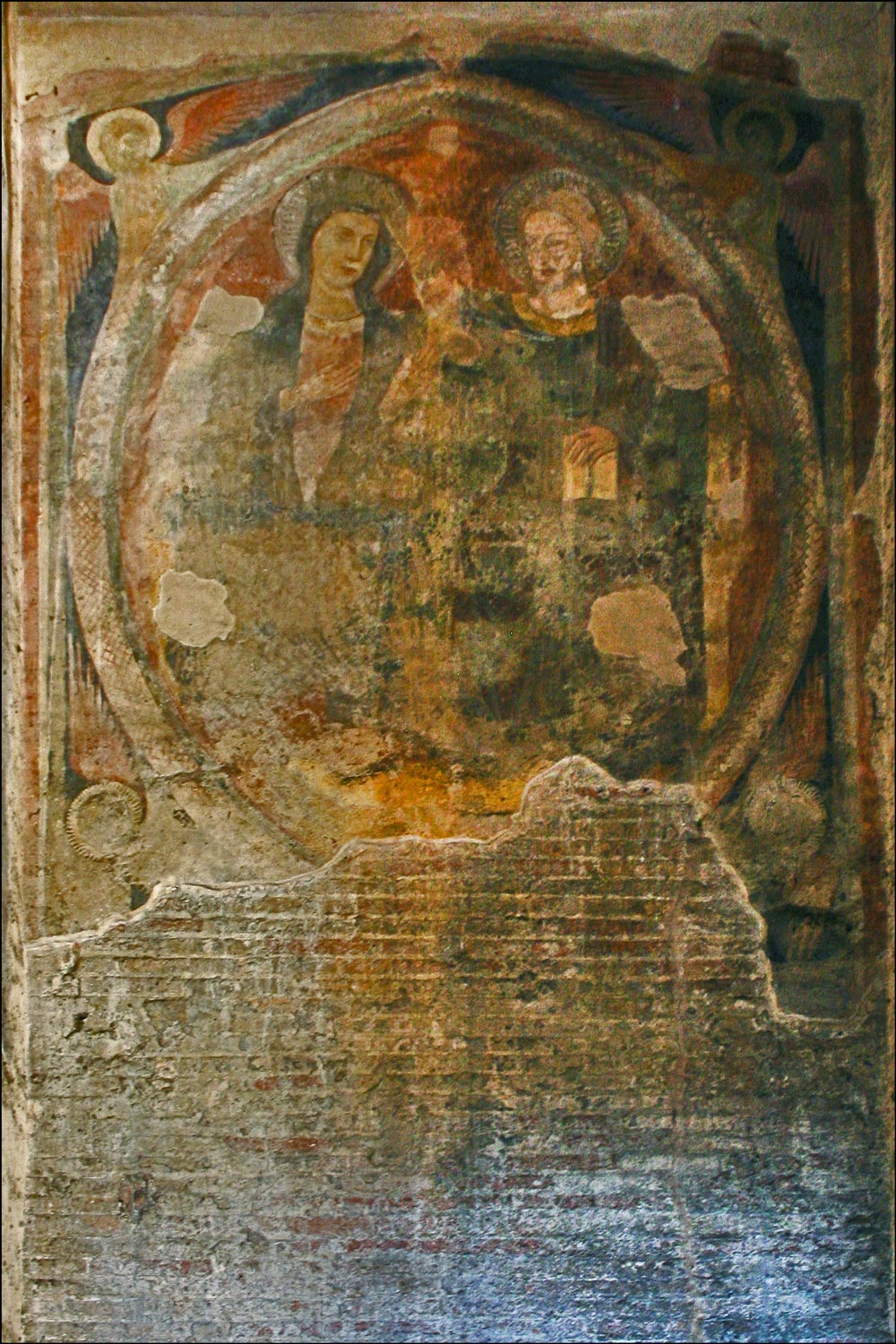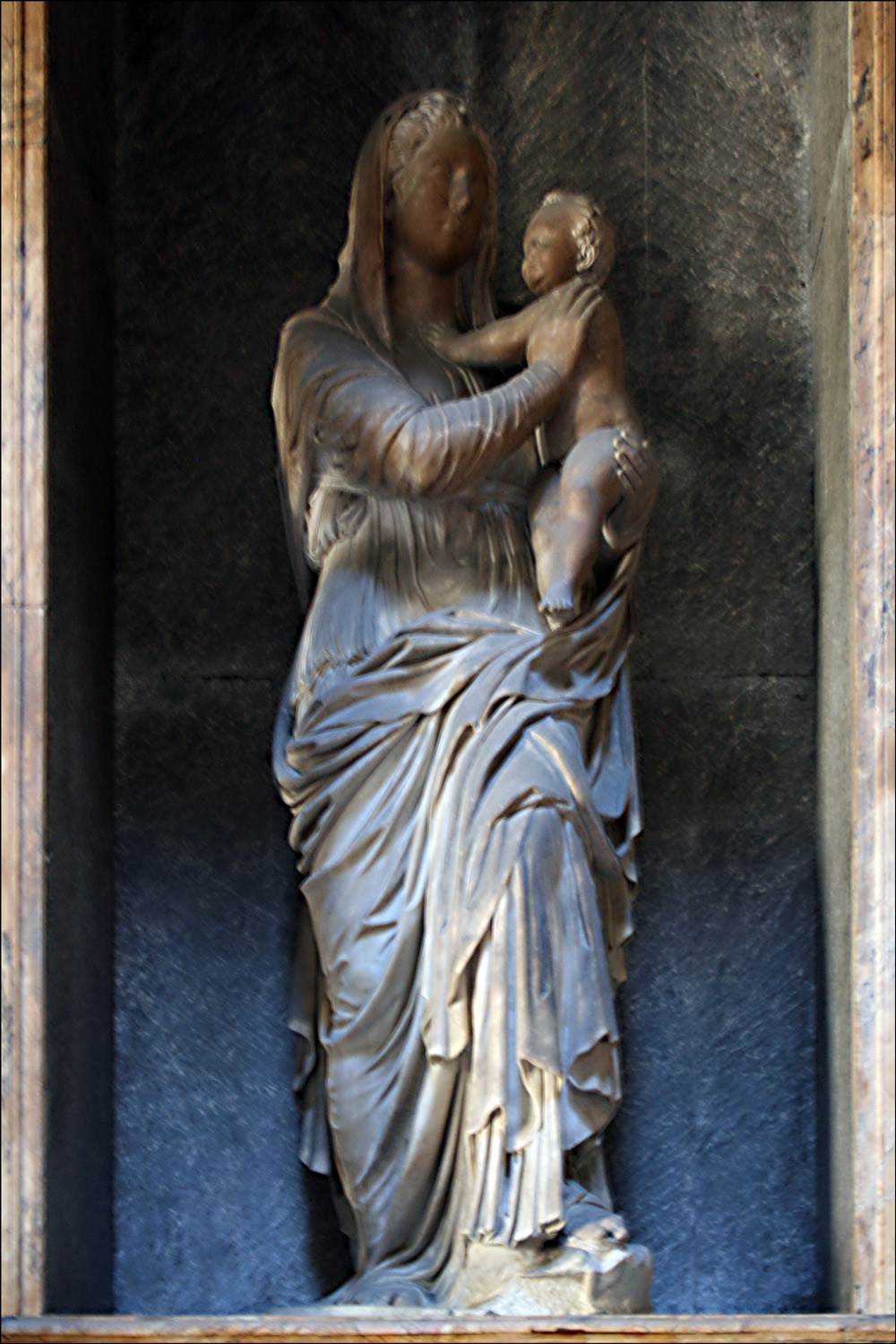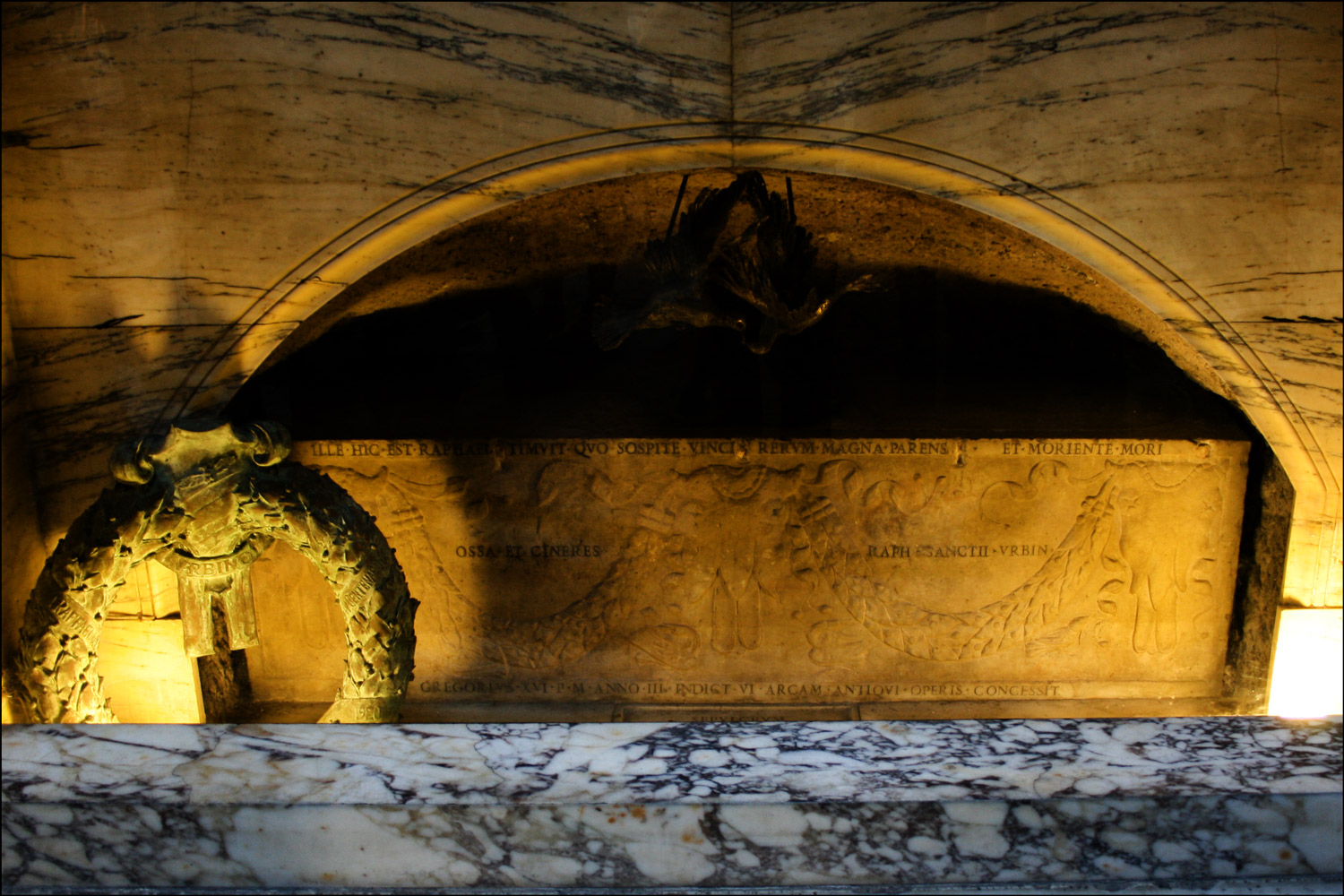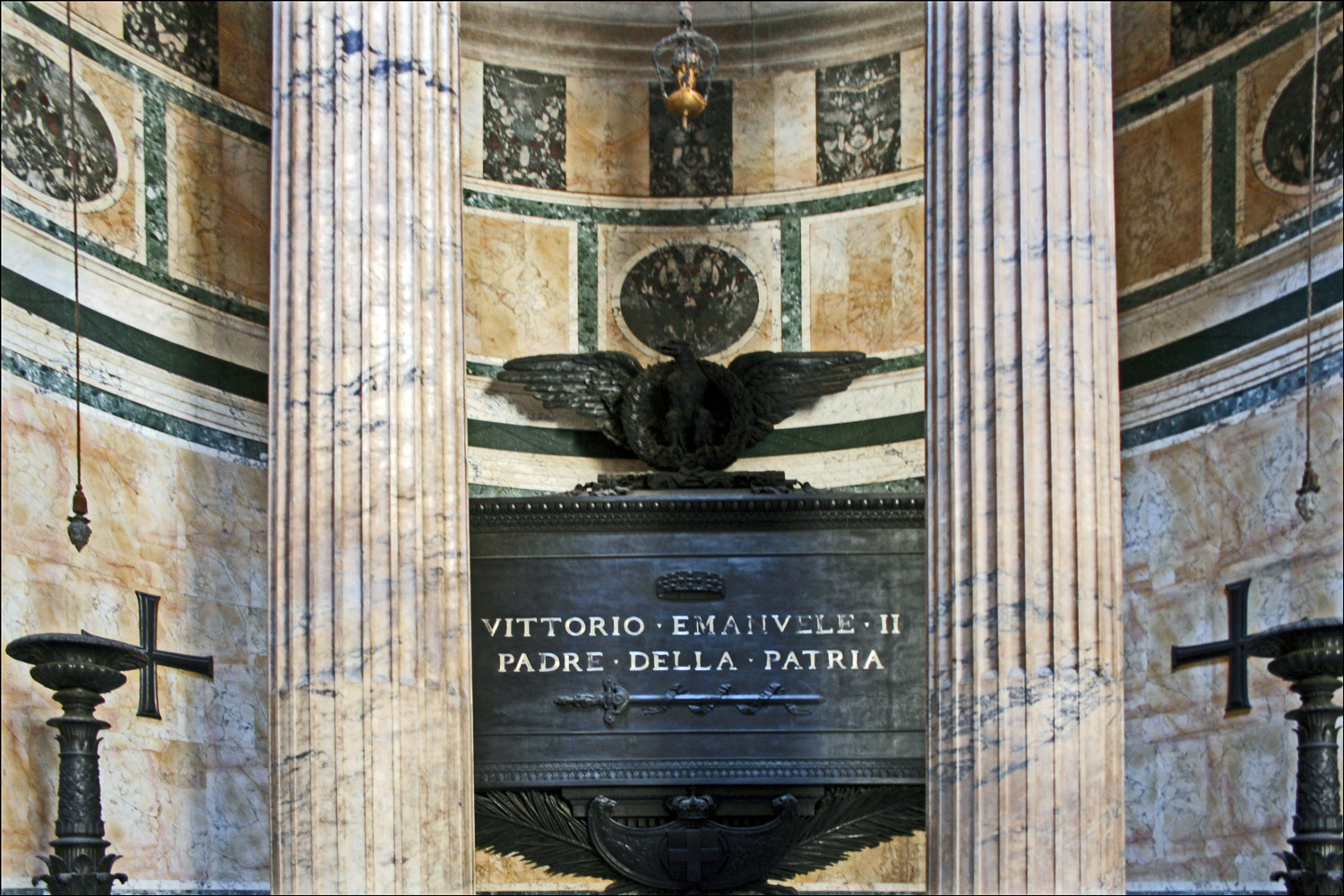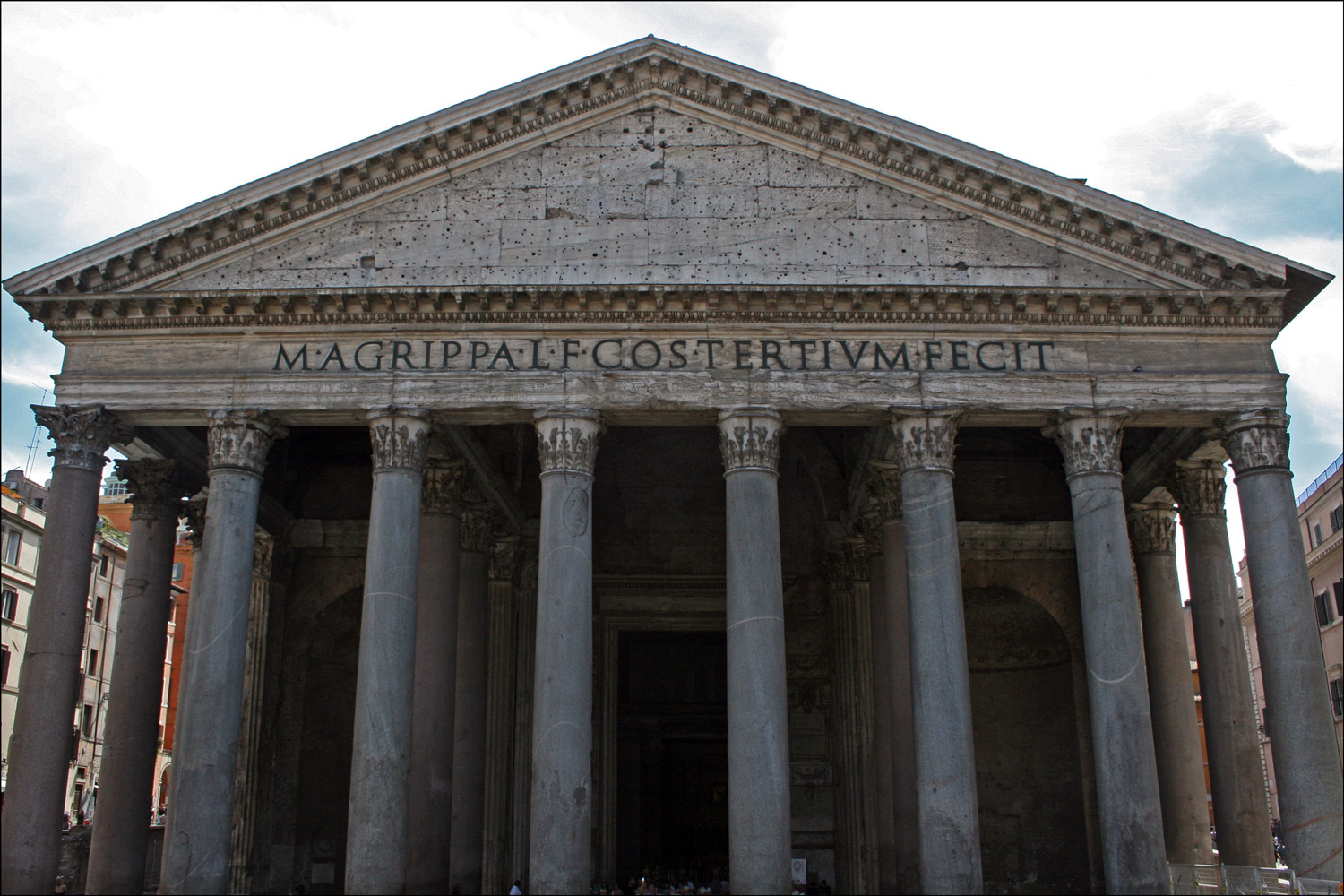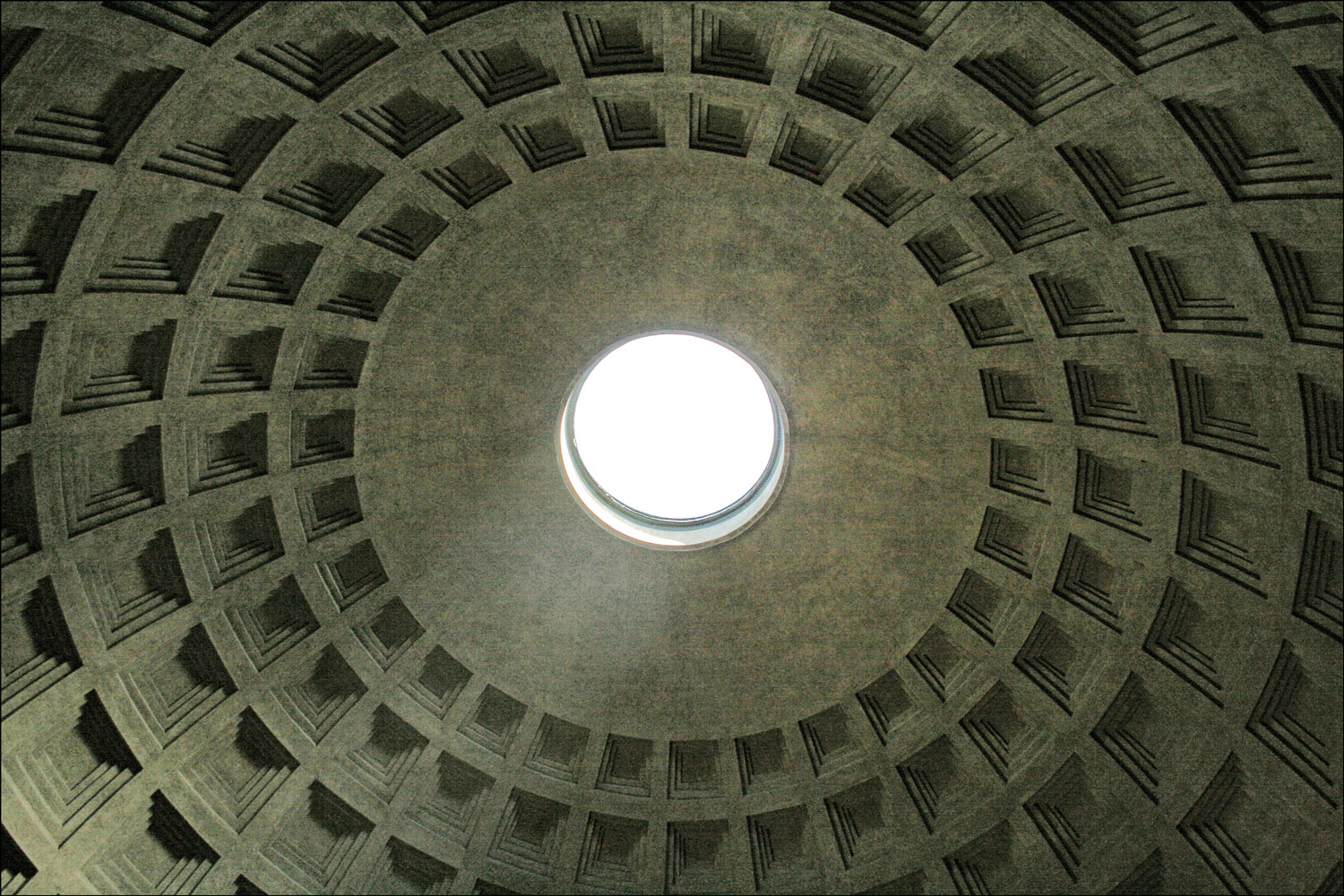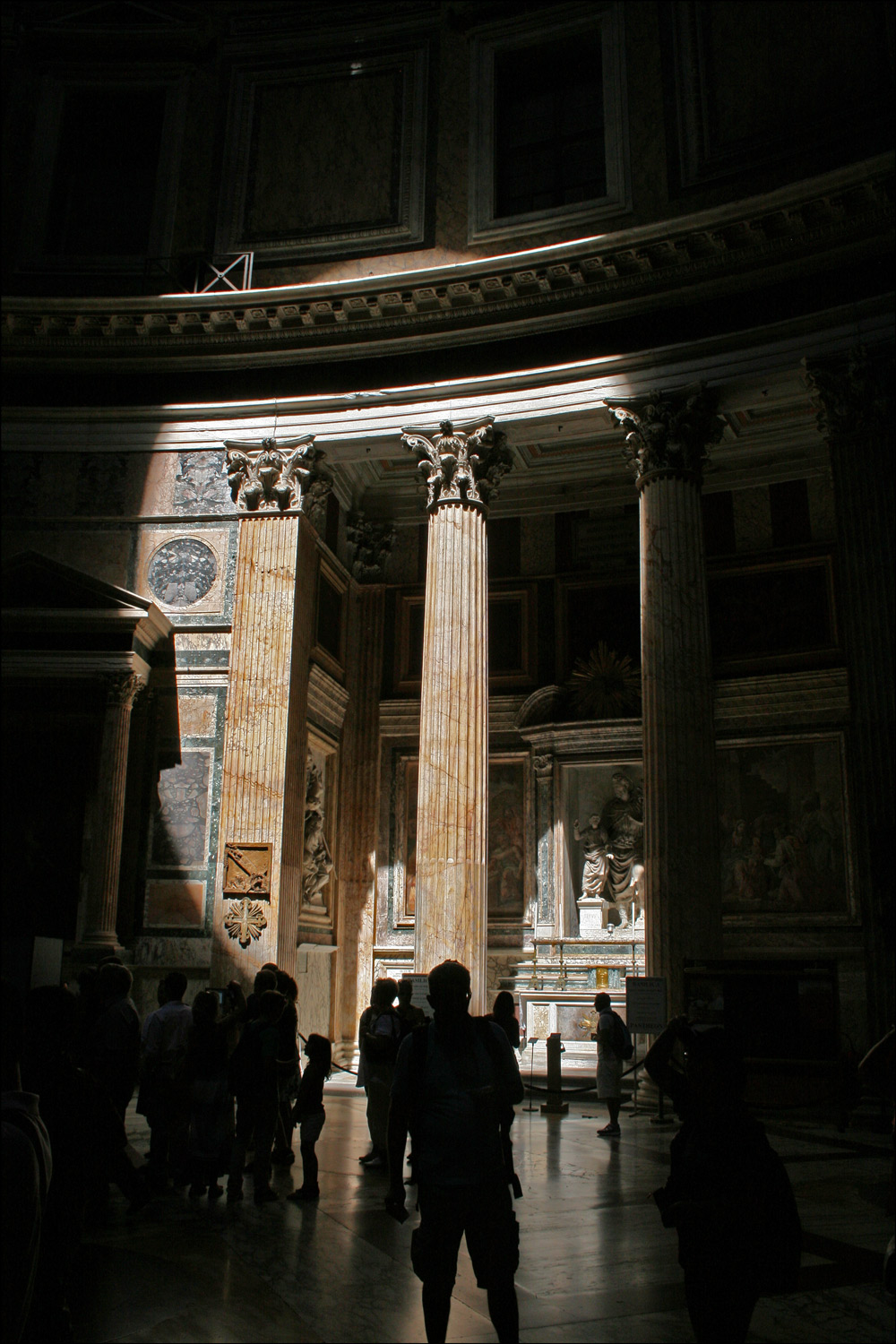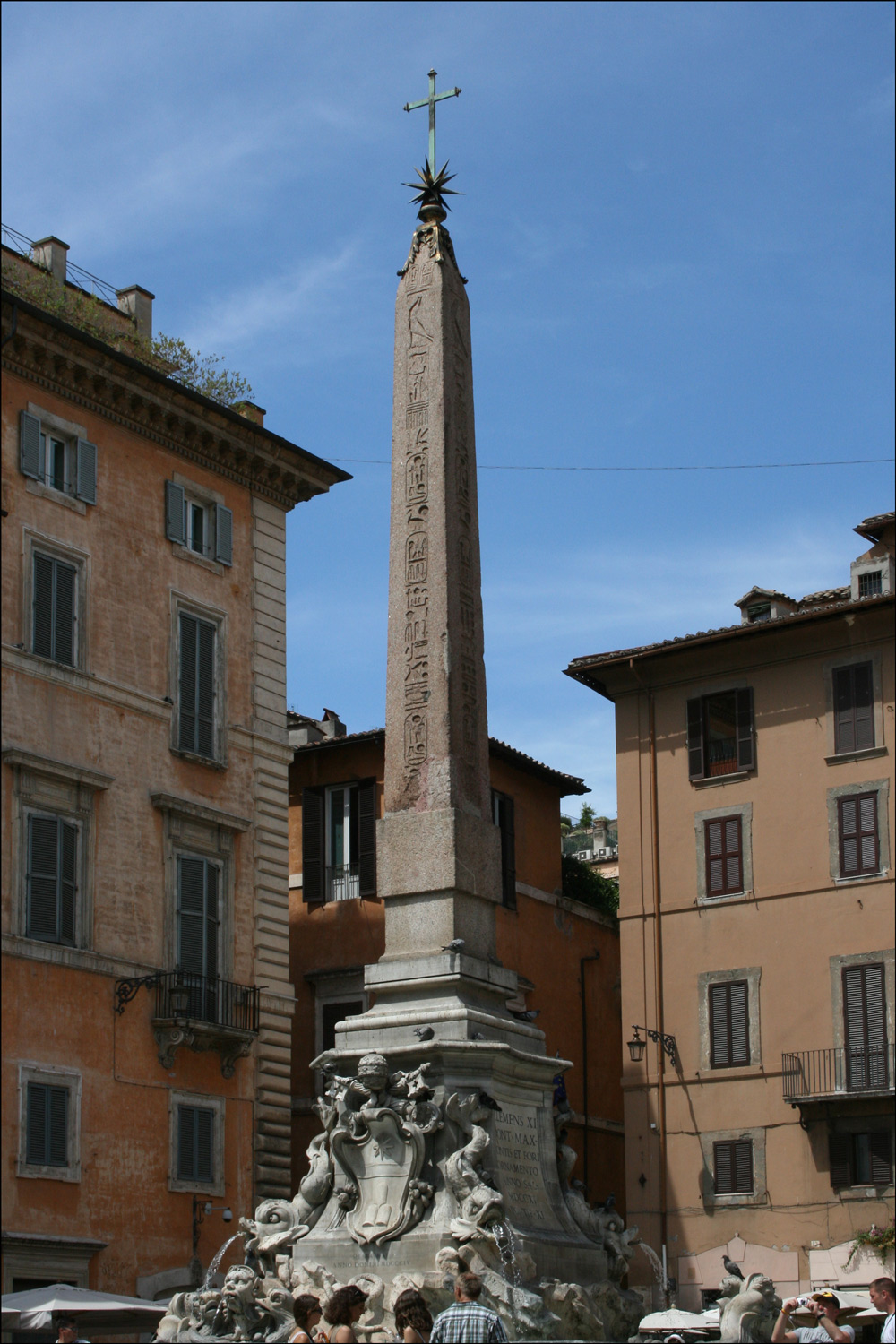As the Tiber River winds through Rome, Italy, pedestrians can stroll along at the level of the river itself or on the streets above the walls that protect Rome from flooding. From the north, one passes a number of bridges including the Umberto I Bridge (Ponte Umberto I)that leads to the Palace of Justice, the Sant’Angelo Bridge (ponte Sant’Angelo) leading to Castel Sant’Angelo, the Victor Emmanuel II Bridge (Ponte Vittorio Emanuele II)Â and the Prince Amedeo Bridge (Ponte Principe Amedeo) just below Castel Sant’Angelo, the Giuseppe Mazzini Bridge (Ponte Mazzini) with its fascinating lamps, and the Palatino Bridge (Ponto Palatino) and the ruins of the Rotto Bridge (Ponte Rotto), just below the rapids.
Victor Emmanuel II Bridge and Prince Amedeo Bridge
SOURCE: Victor Emmanuel II Bridge and Prince Amedeo Bridge (Rome, Lazio, Italy); photographed by Stephen J. Danko on 12 August 2011.
Giuseppe Mazzi Bridge
SOURCE: Giuseppe Mazzini Bridge (Rome, Lazio, Italy); photographed by Stephen J. Danko on 12 August 2011.
Base of Lamp on the Giuseppe Mazzini Bridge
SOURCE: Base of Lamp on the Giuseppe Mazzini Bridge (Rome, Lazio, Italy); photographed by Stephen J. Danko on 12 August 2011.
Palatino Bridge and Ruins of the Rotto Bridge
SOURCE: Palatino Bridge and Ruins of the Rotto Bridge (Rome, Lazio, Italy); photographed by Stephen J. Danko on 12 August 2011.
Copyright © 2011 by Stephen J. Danko

